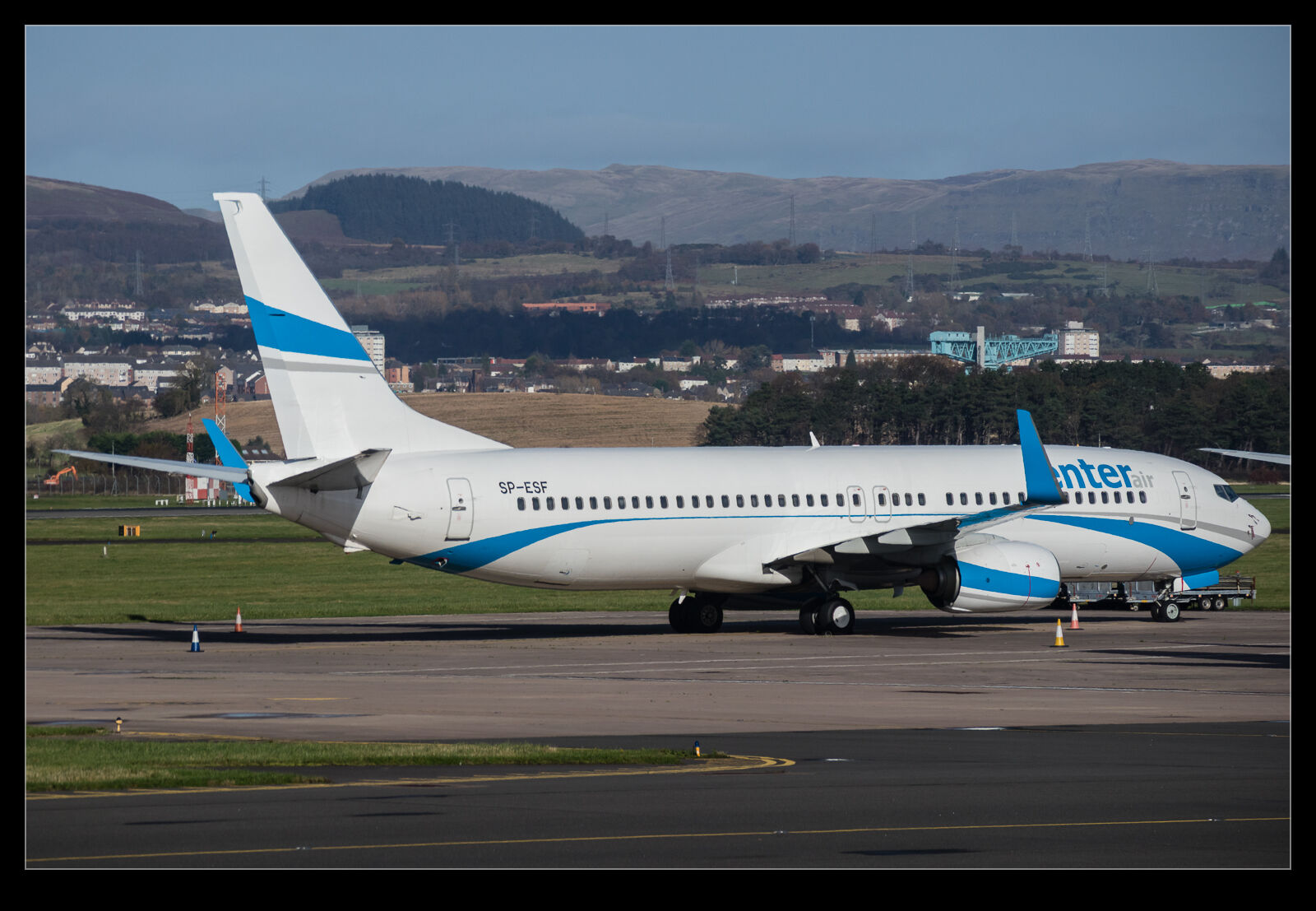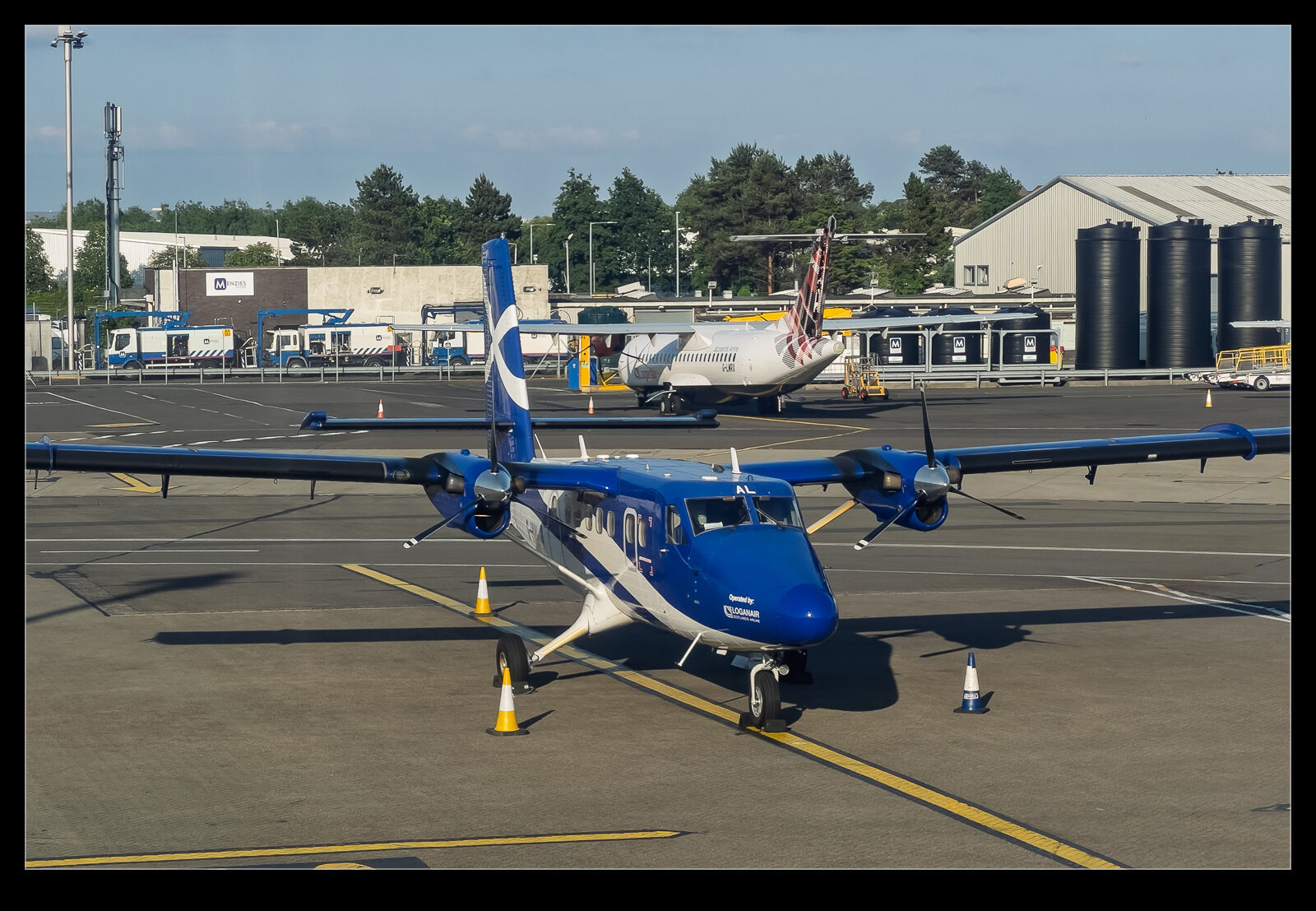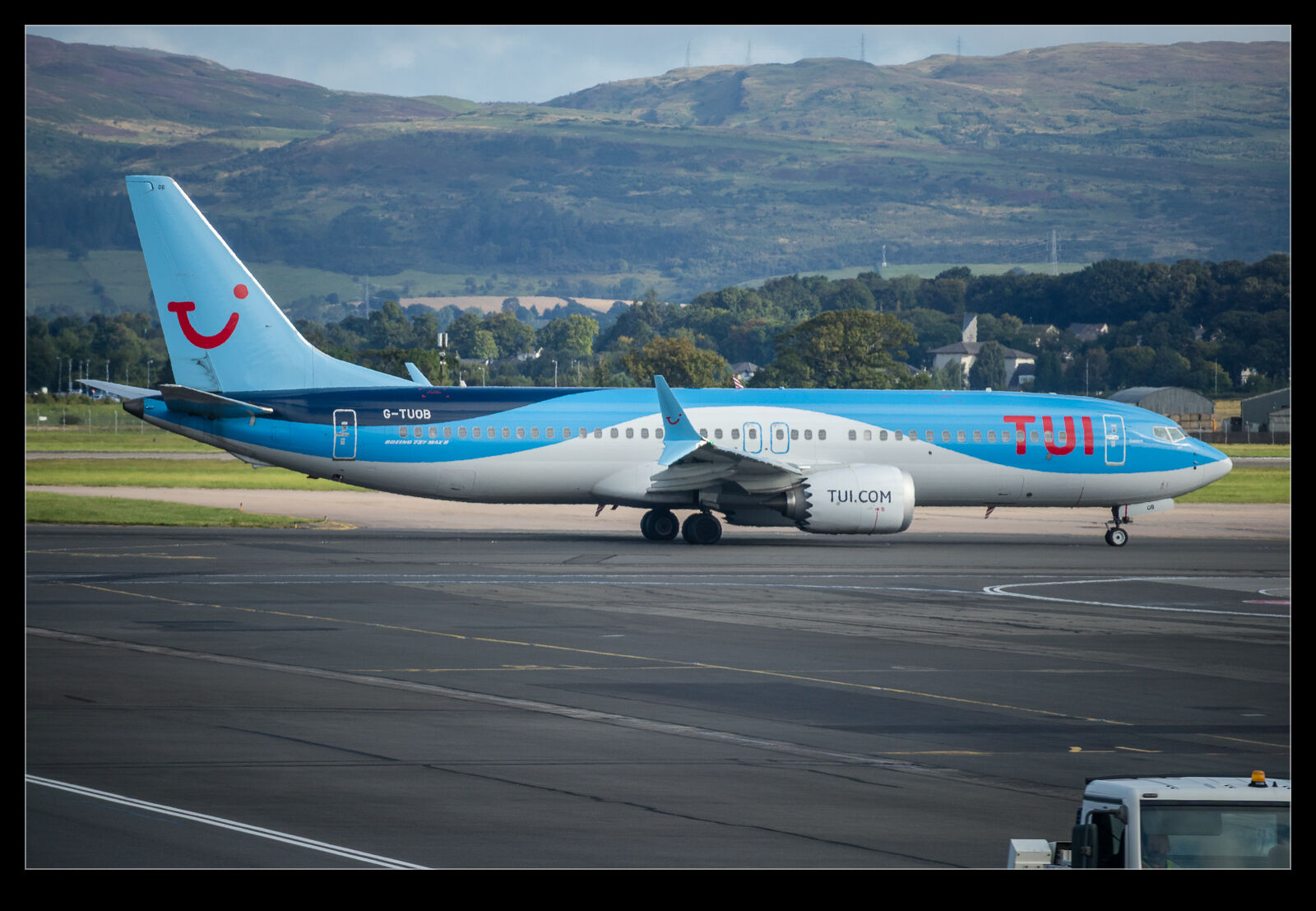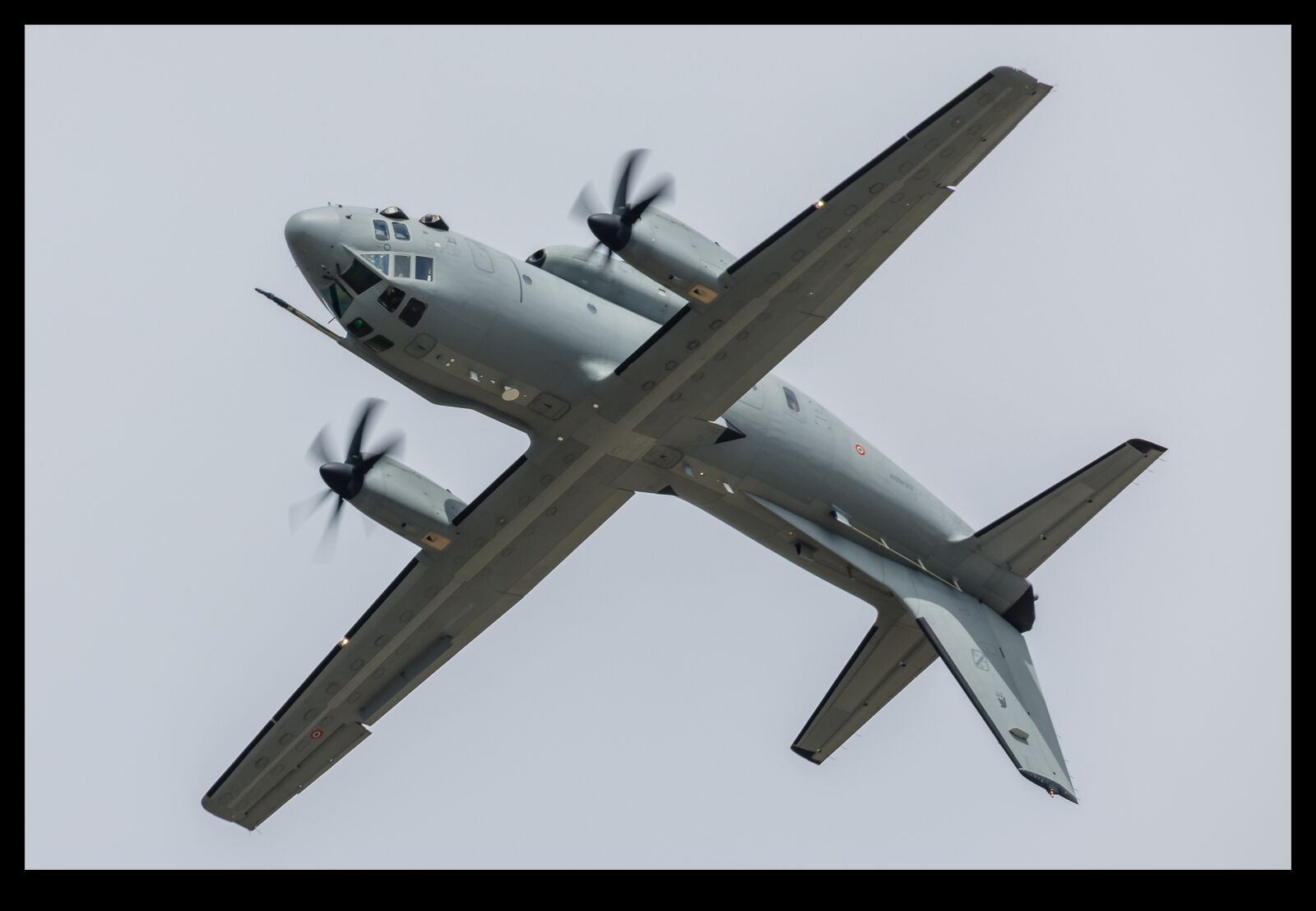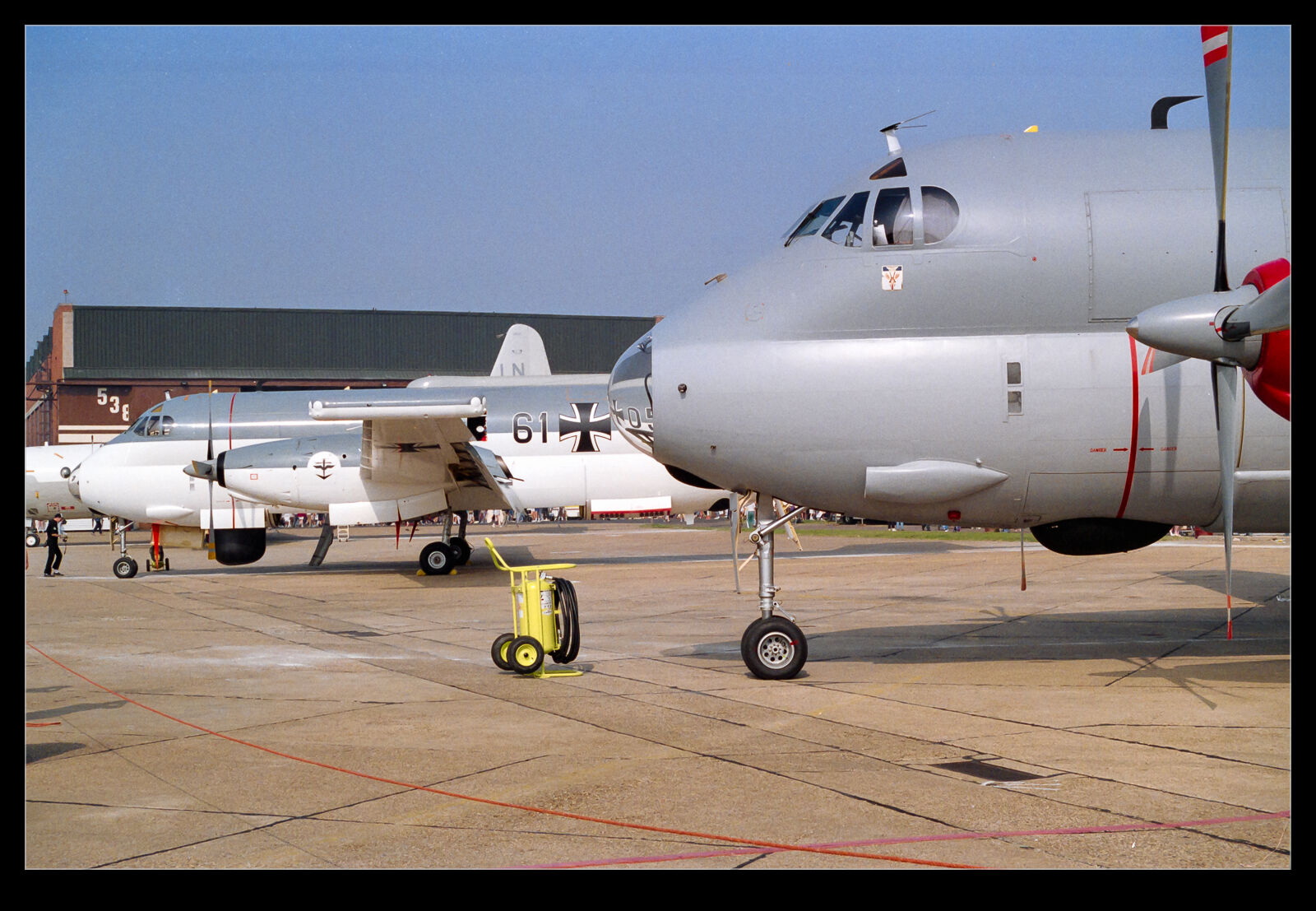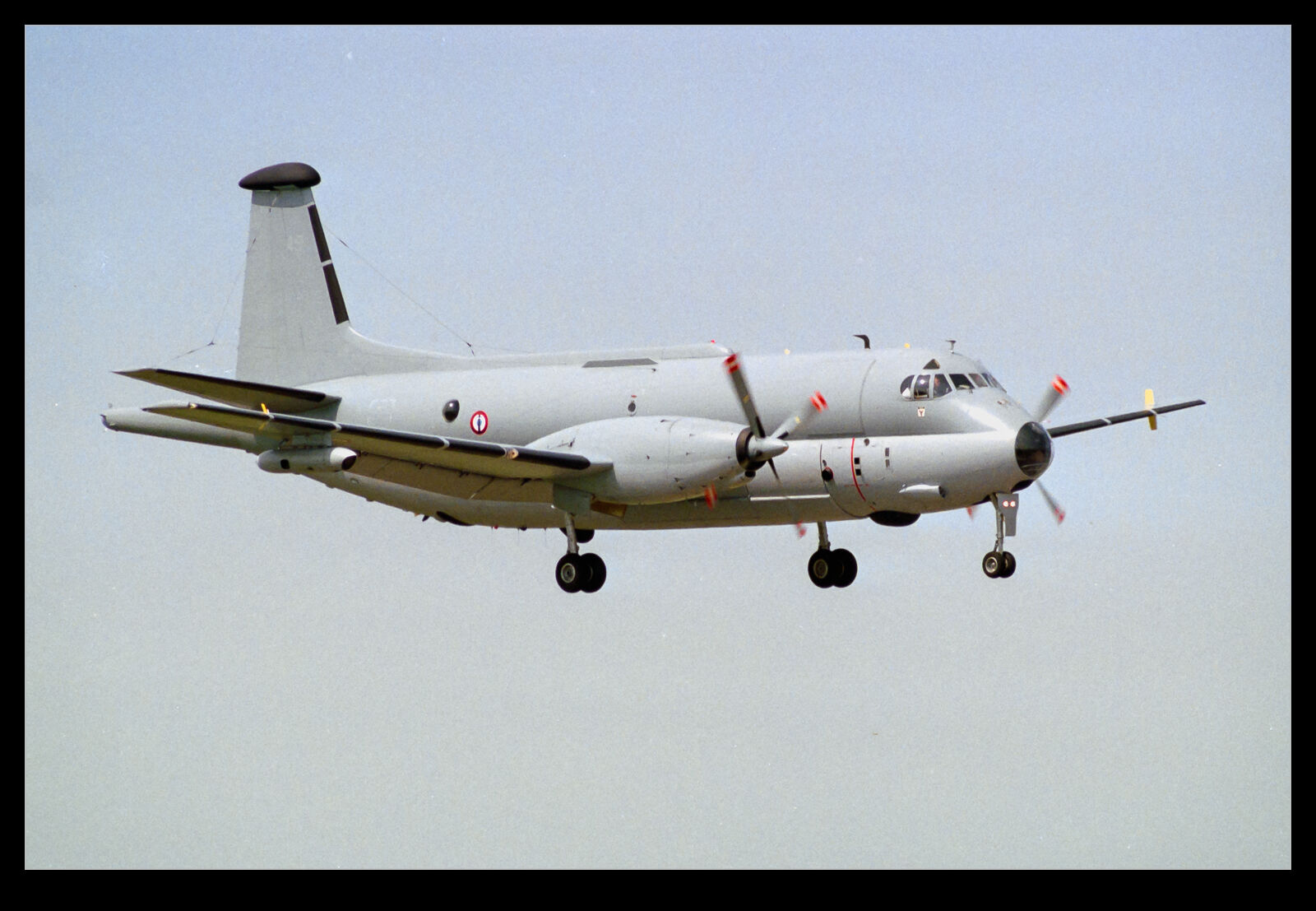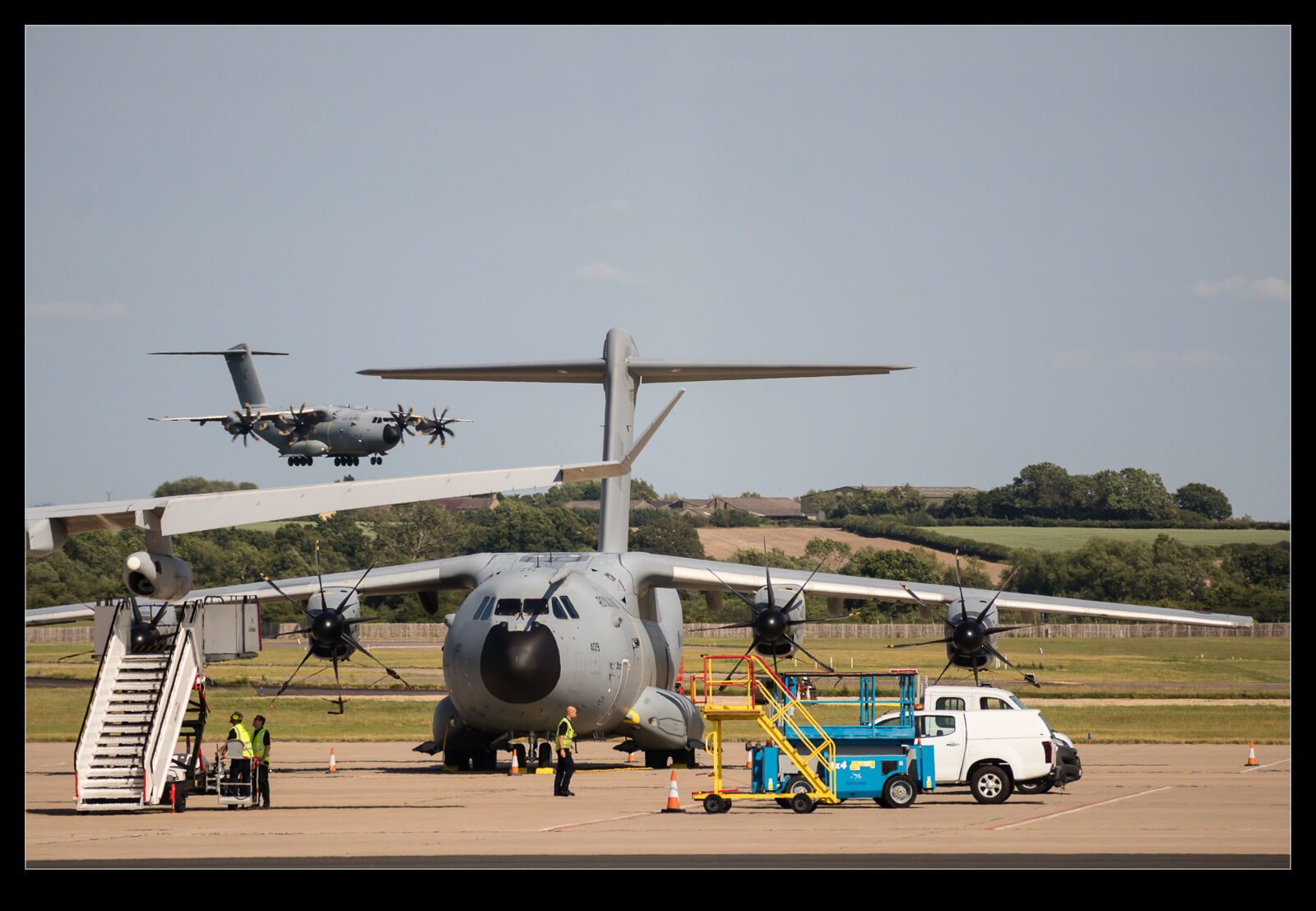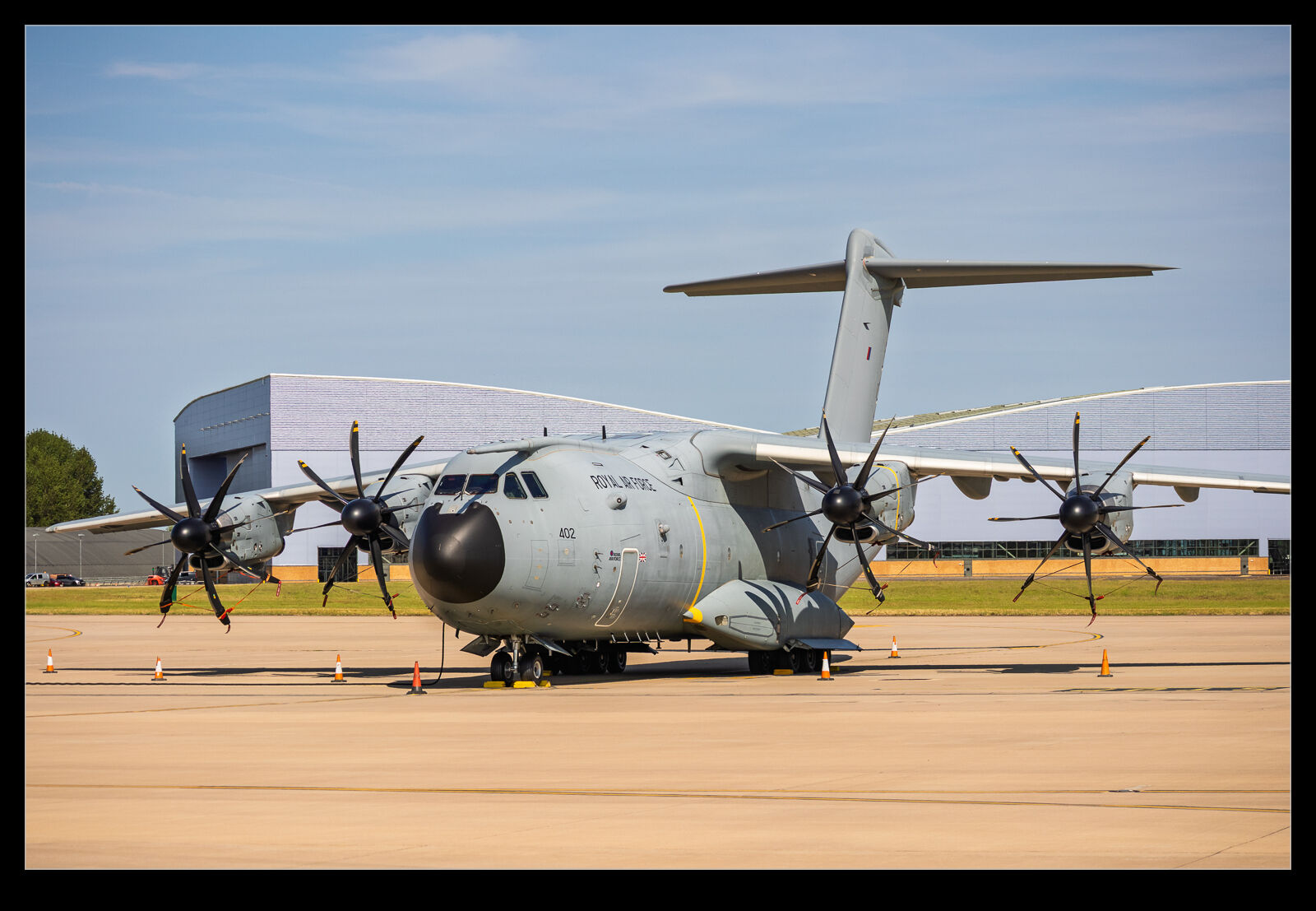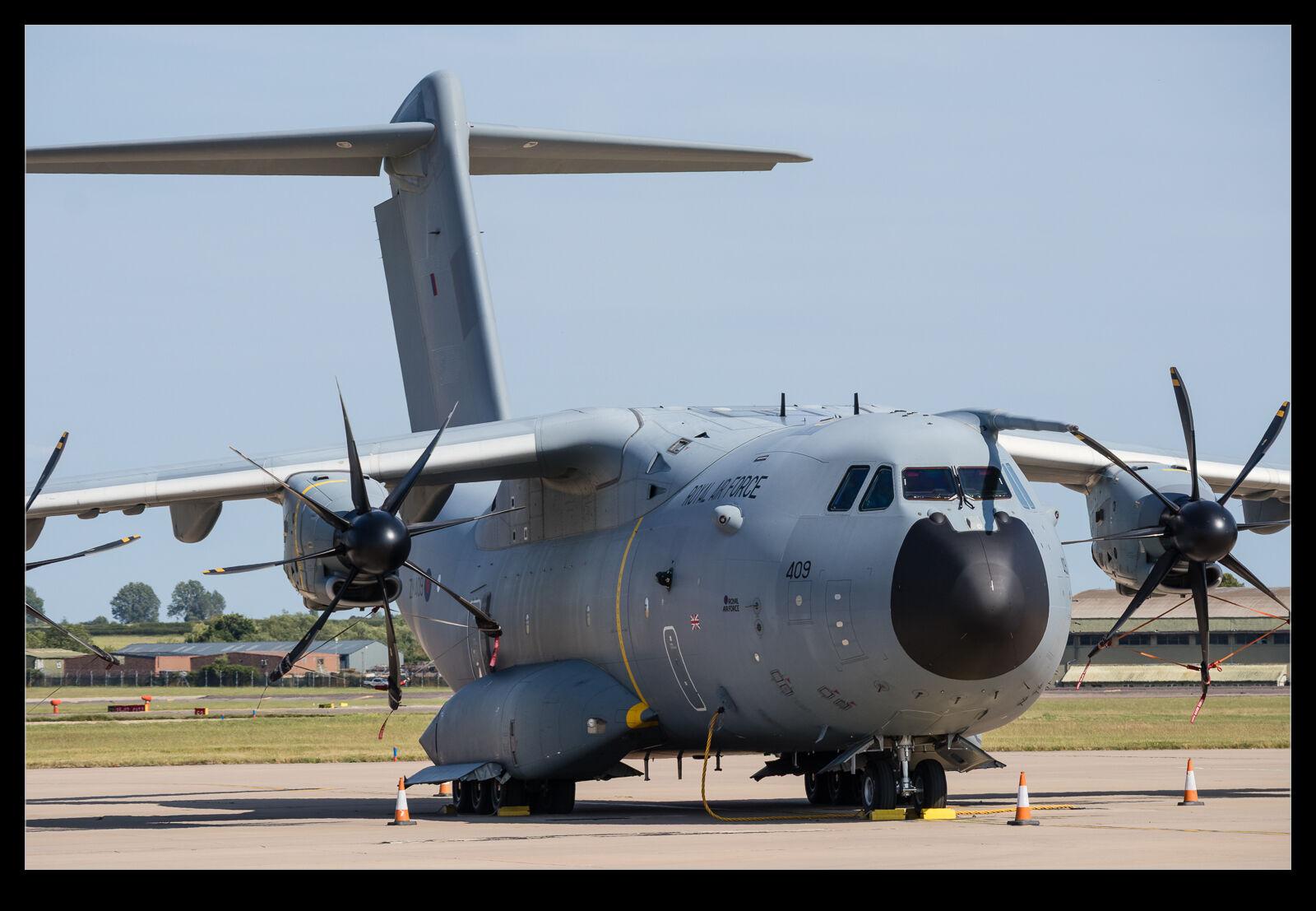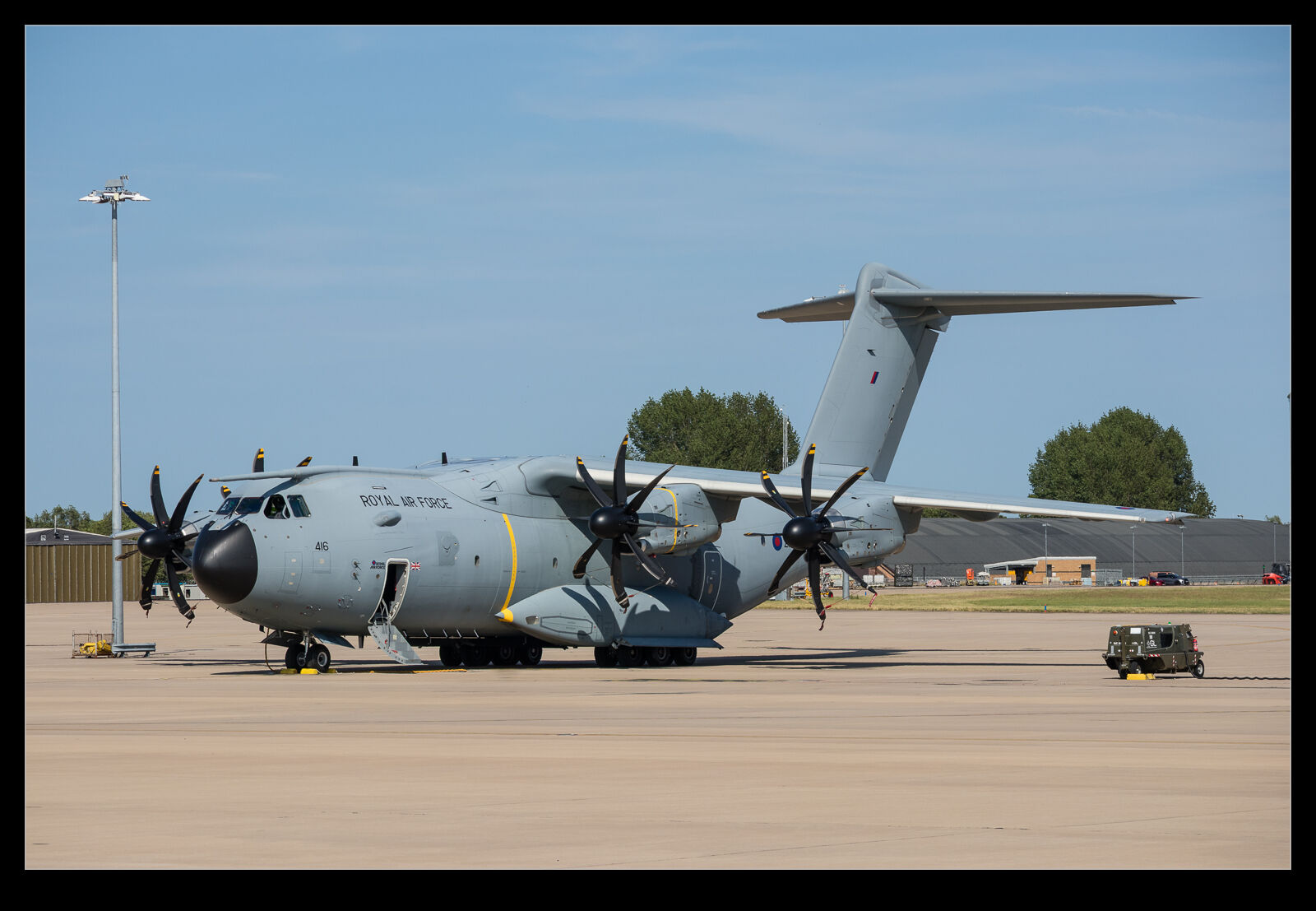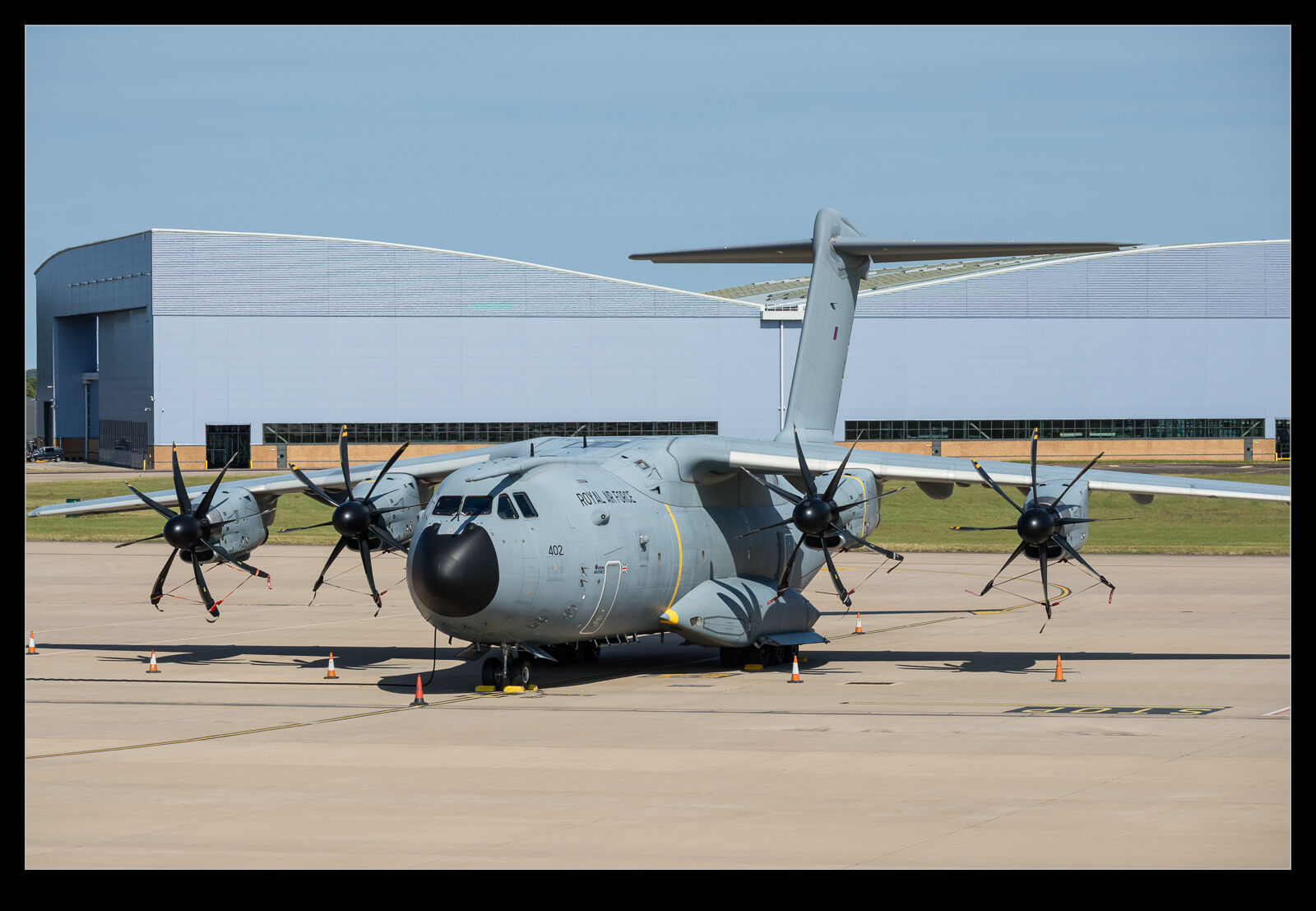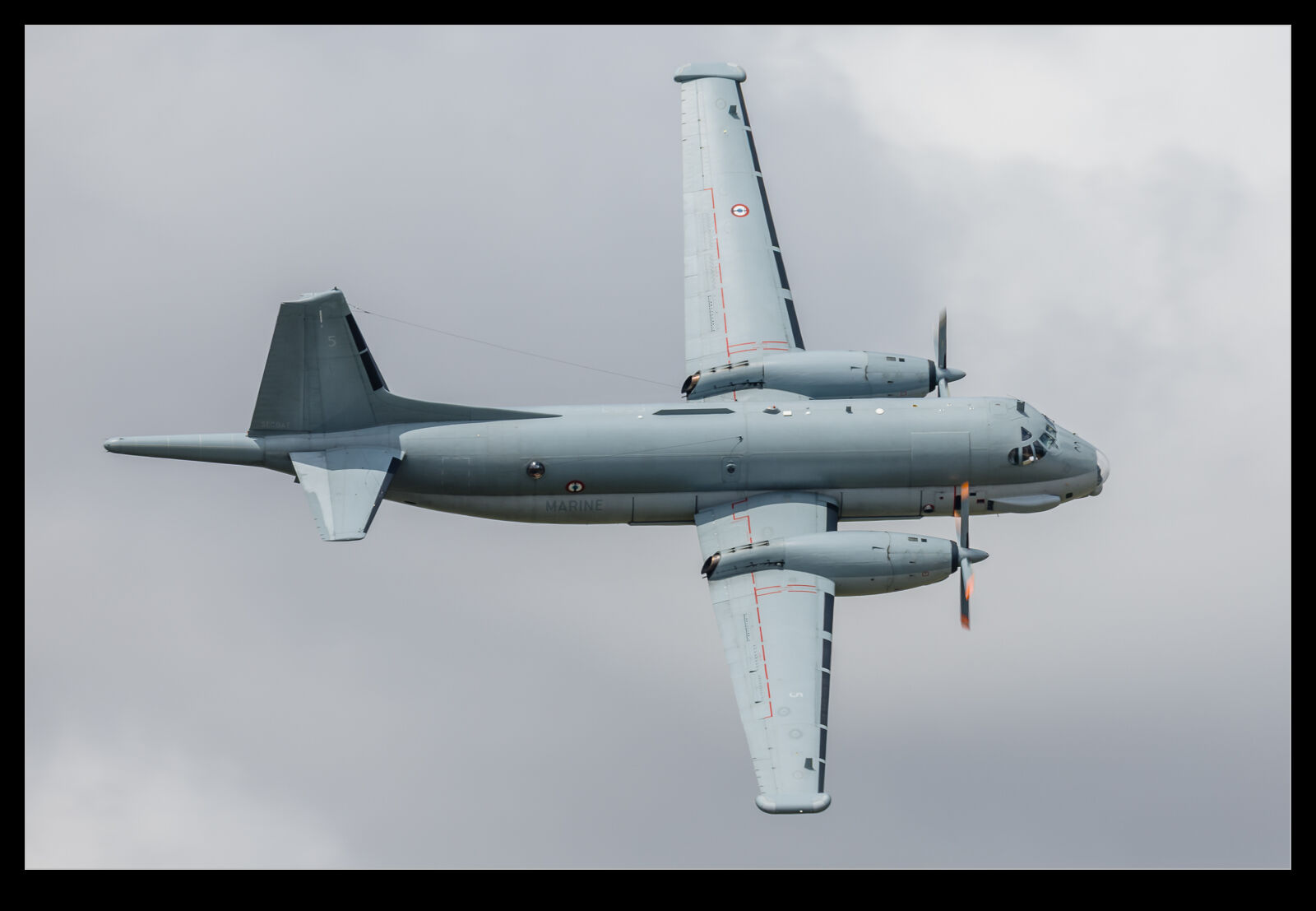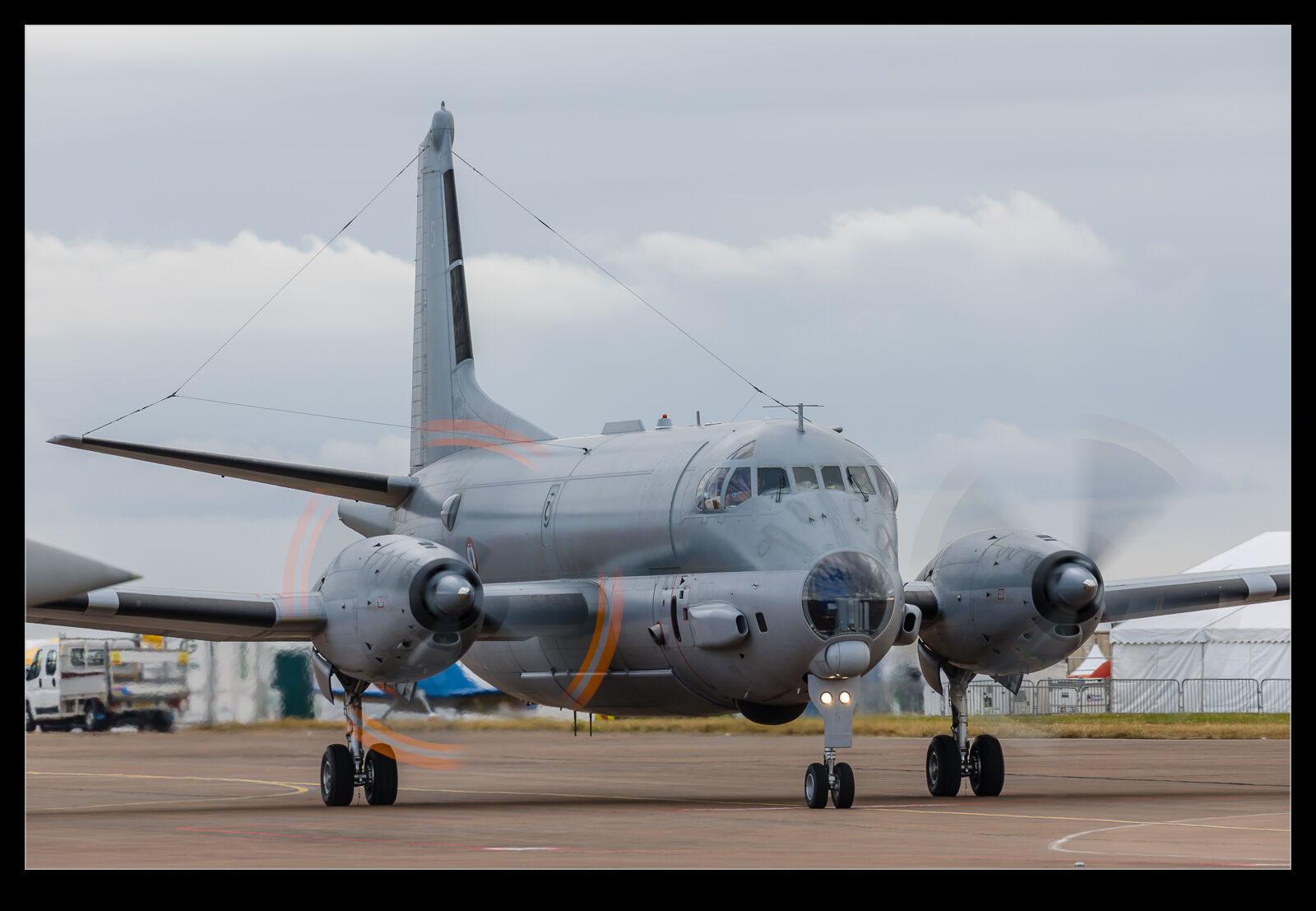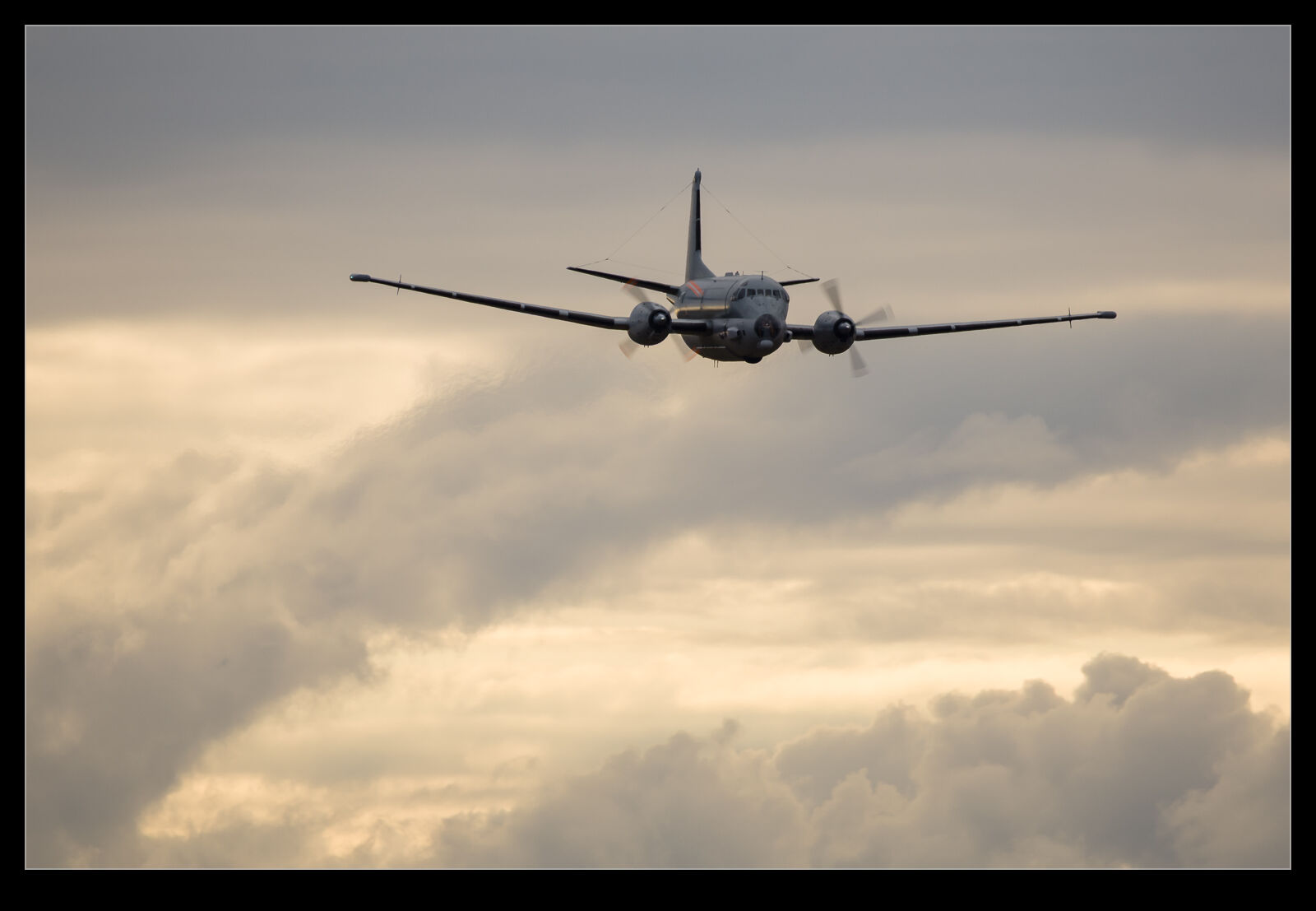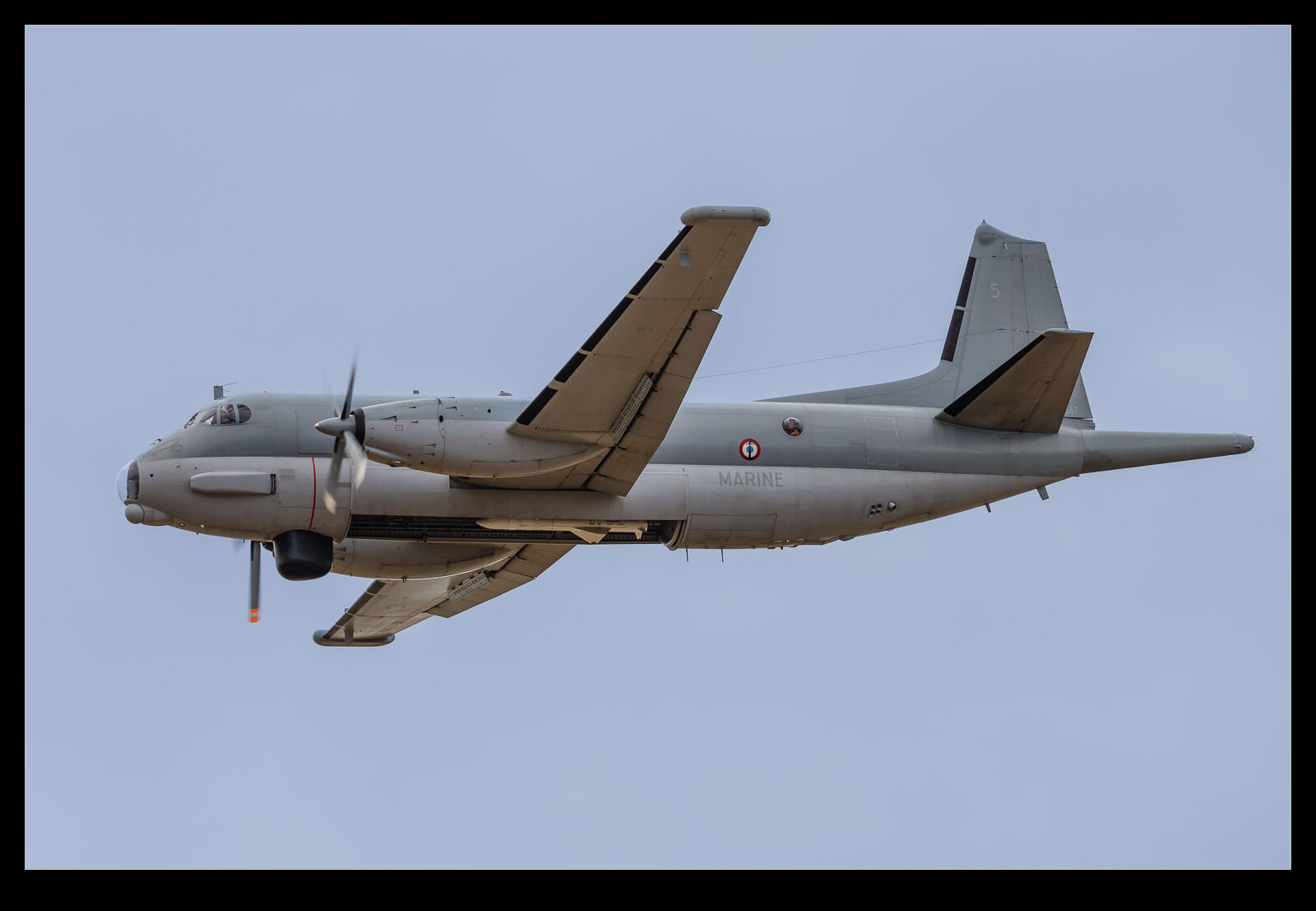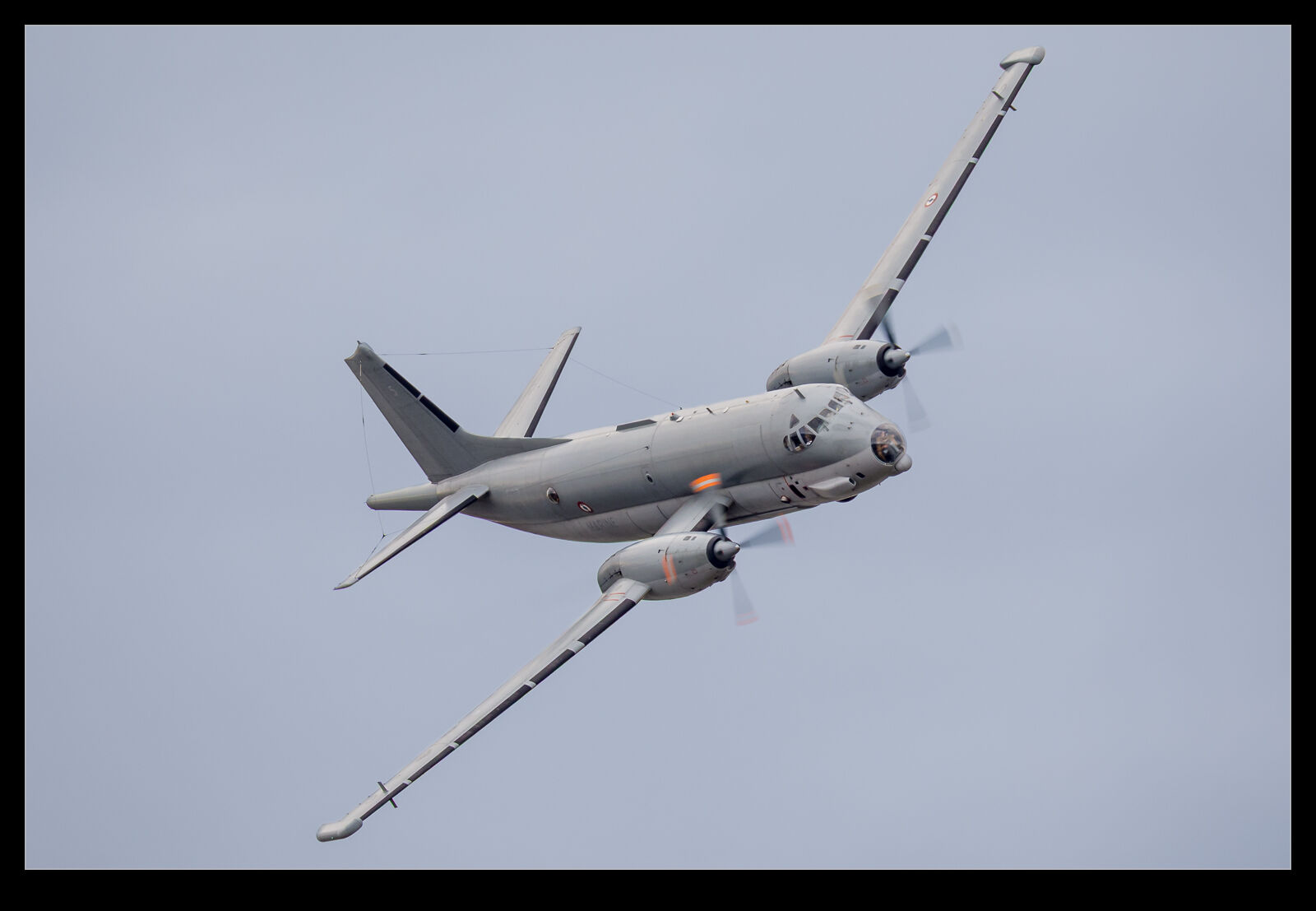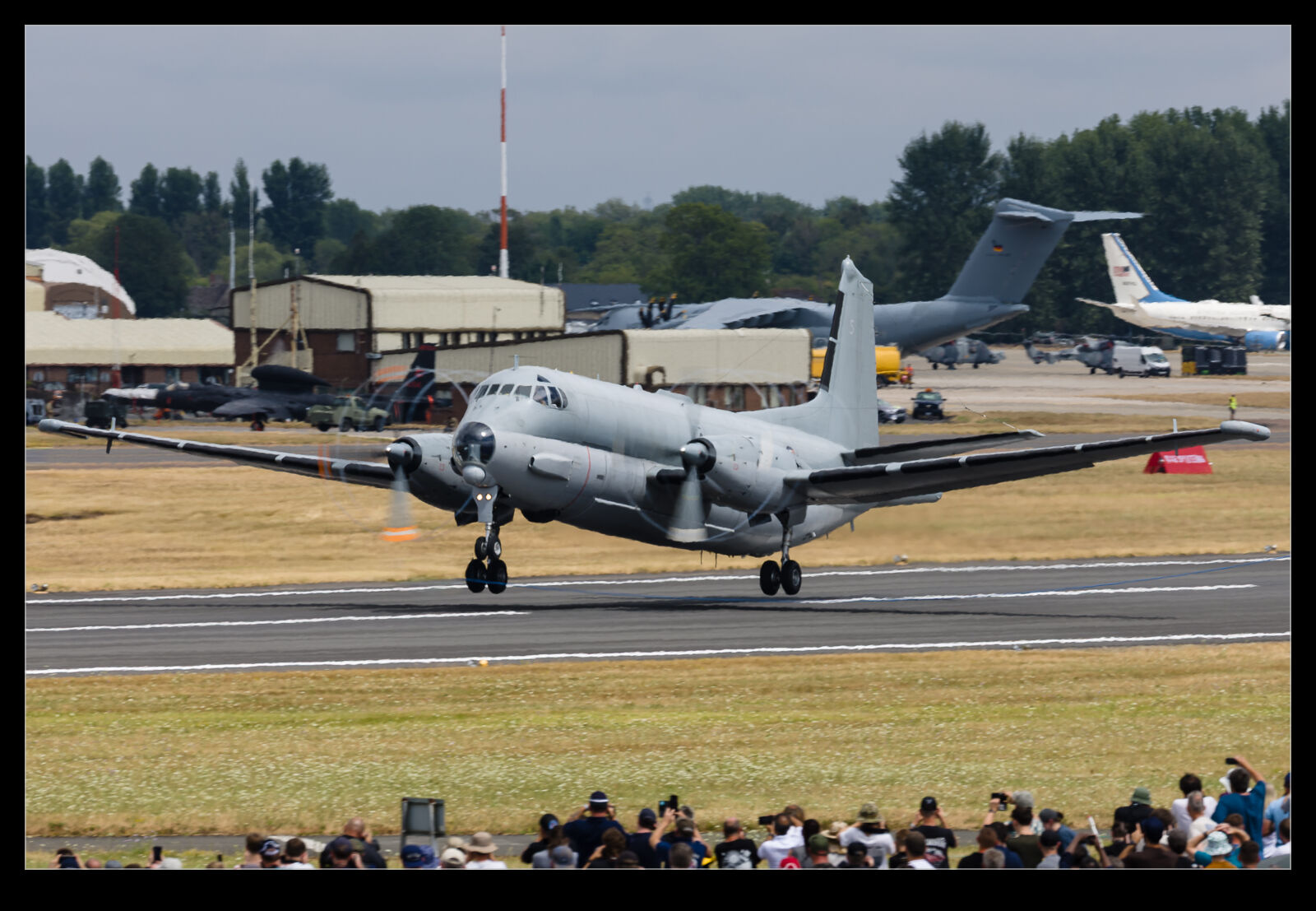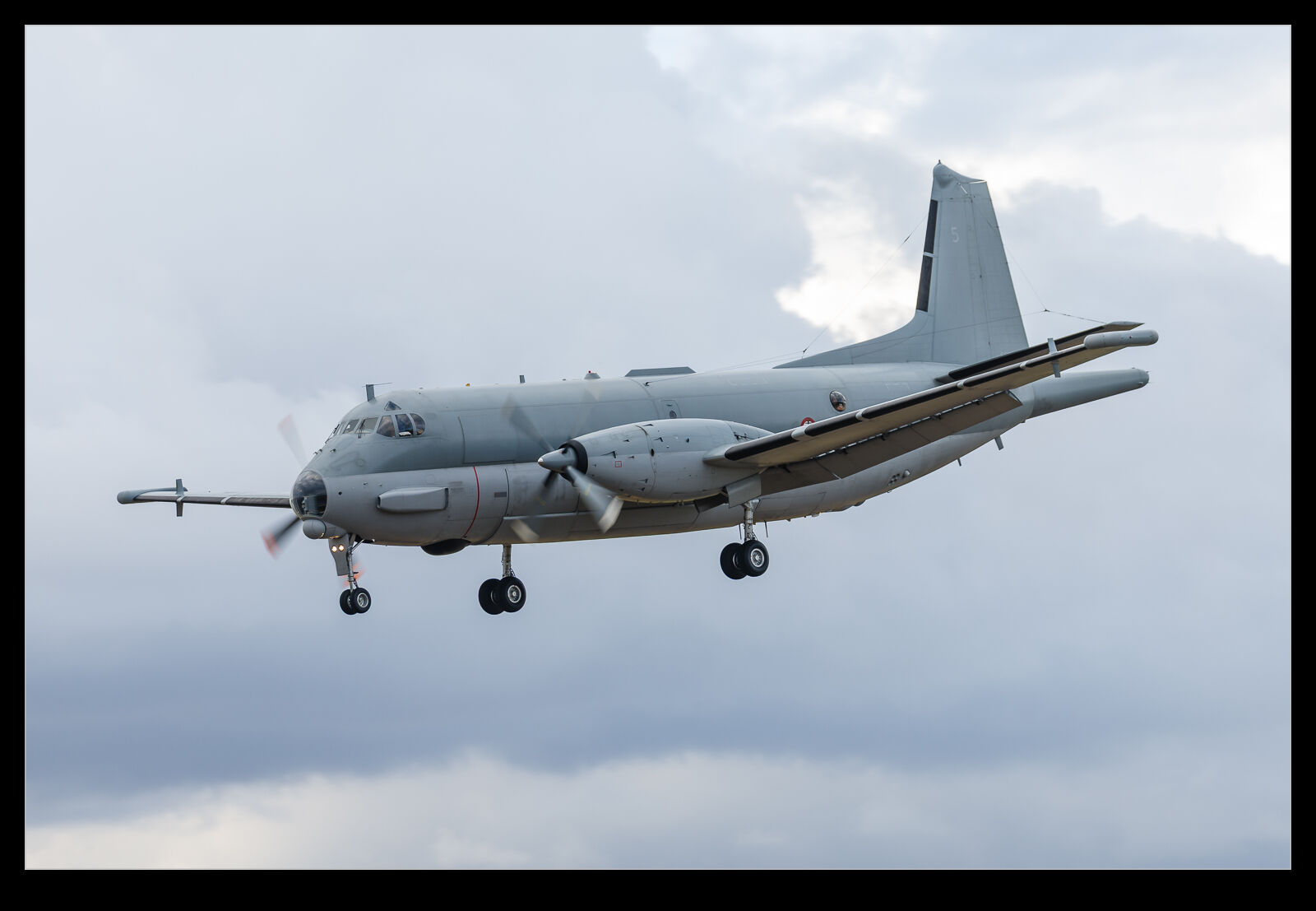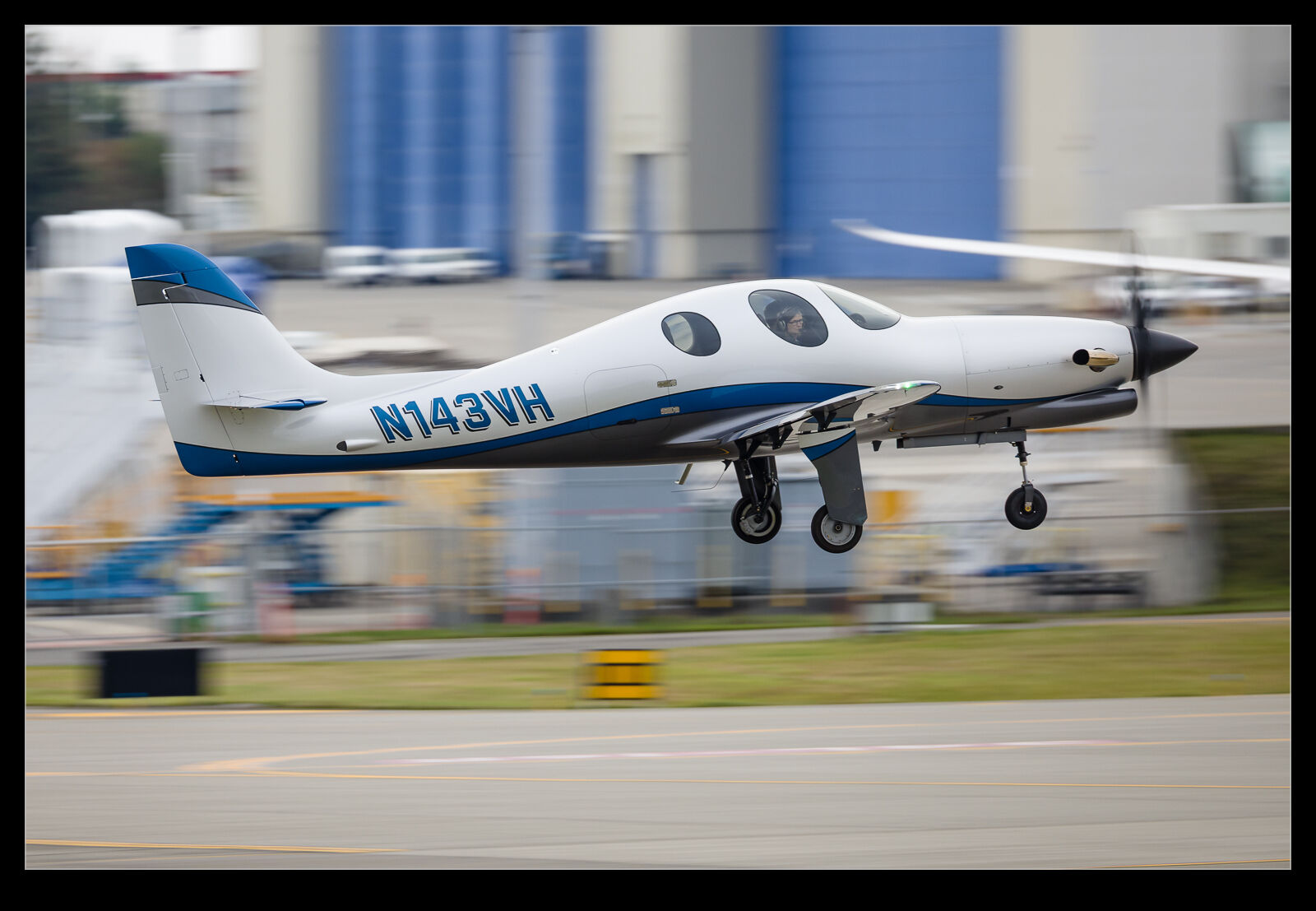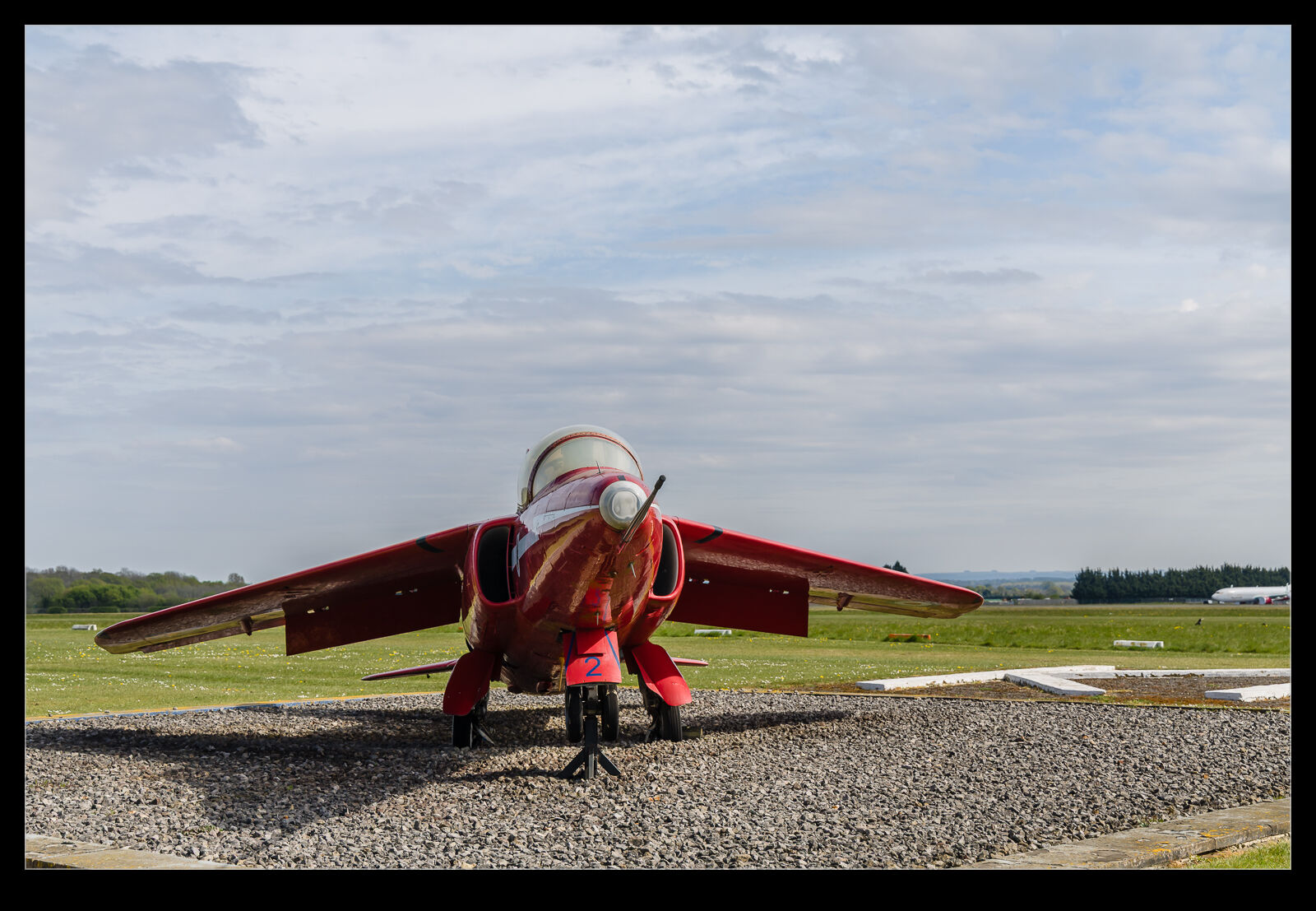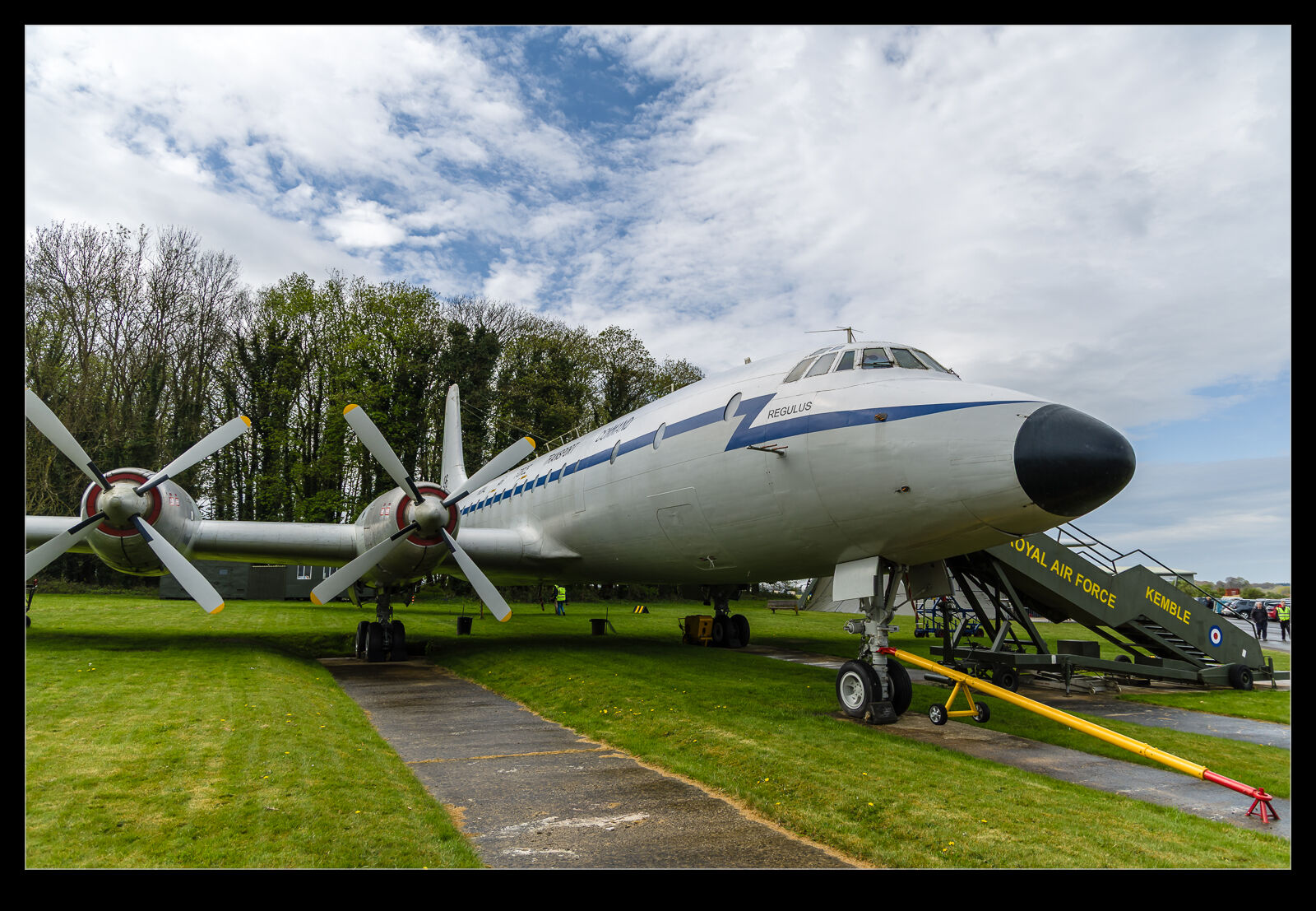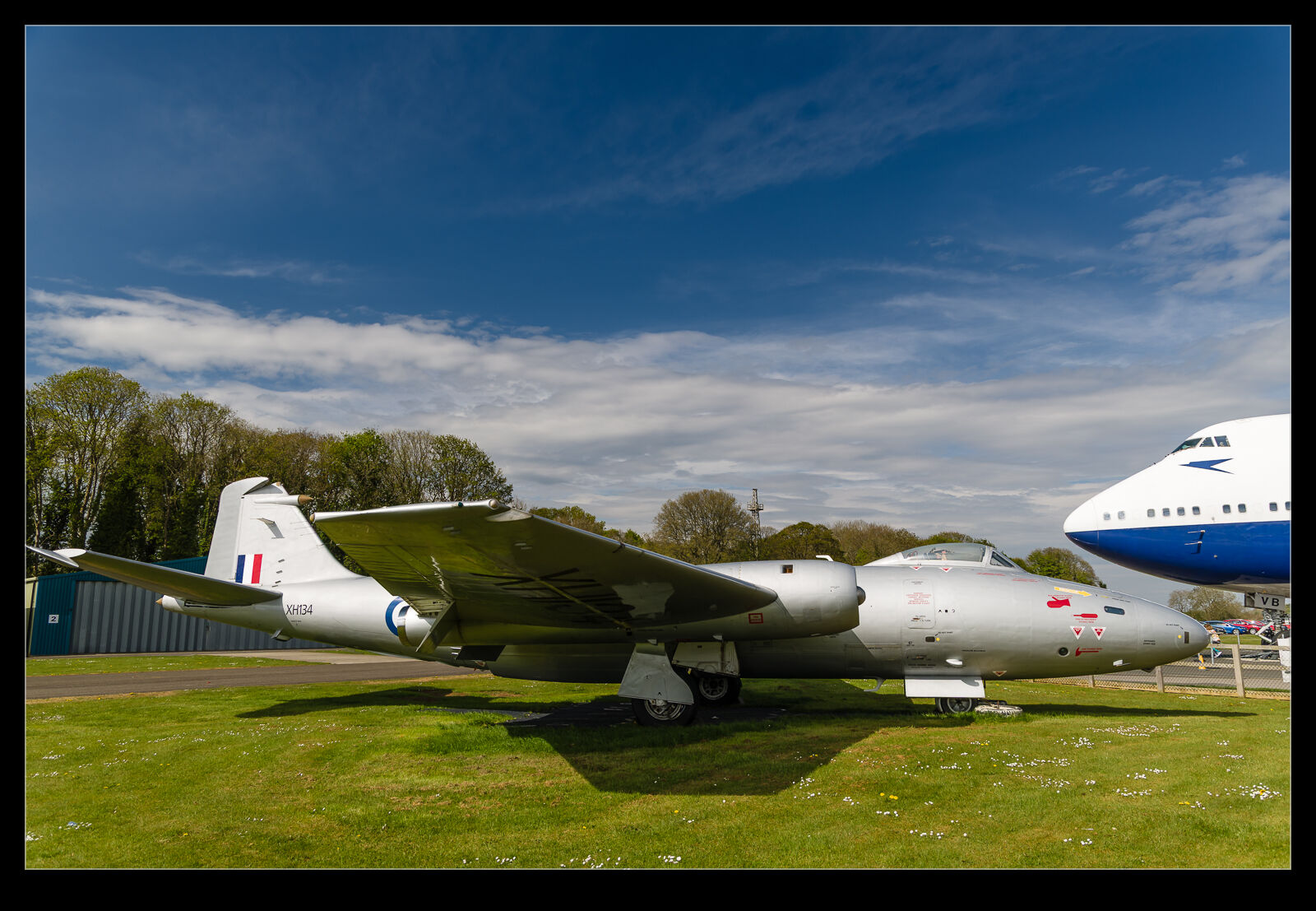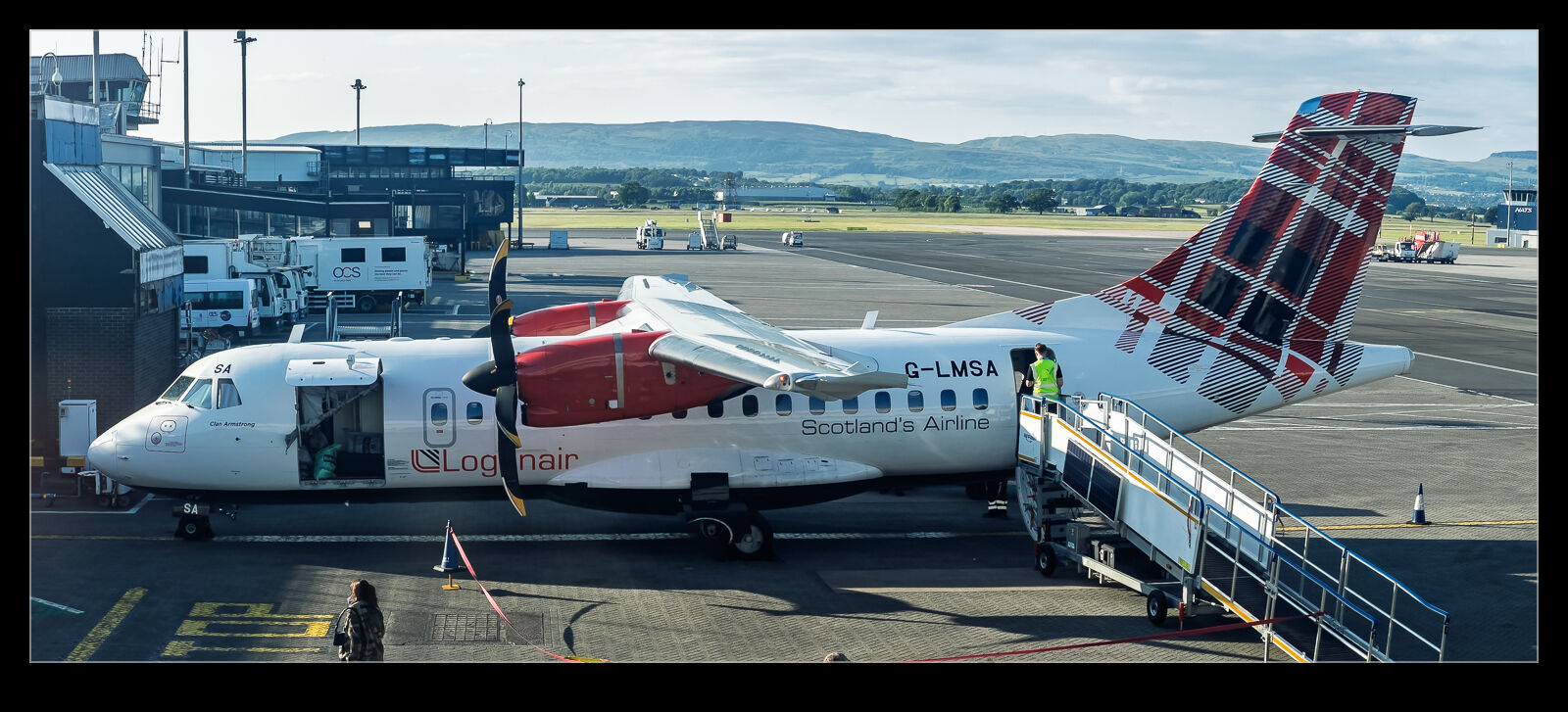 I have had to make a few trips to Glasgow recently and, while some of them involved the train up, I did also fly on occasion. This meant I had some time at Glasgow Airport waiting for my flight home. British Airways and EasyJet are regular features at Glasgow so nothing new about them. However, you get some visitors from Europe and Loganair has a number of turboprops based there so this was a nice chance to see something different to the norm (although I get plenty of ATRs passing the house).
I have had to make a few trips to Glasgow recently and, while some of them involved the train up, I did also fly on occasion. This meant I had some time at Glasgow Airport waiting for my flight home. British Airways and EasyJet are regular features at Glasgow so nothing new about them. However, you get some visitors from Europe and Loganair has a number of turboprops based there so this was a nice chance to see something different to the norm (although I get plenty of ATRs passing the house).
Tag Archives: turboprop
Throwing a Transport Around the Sky
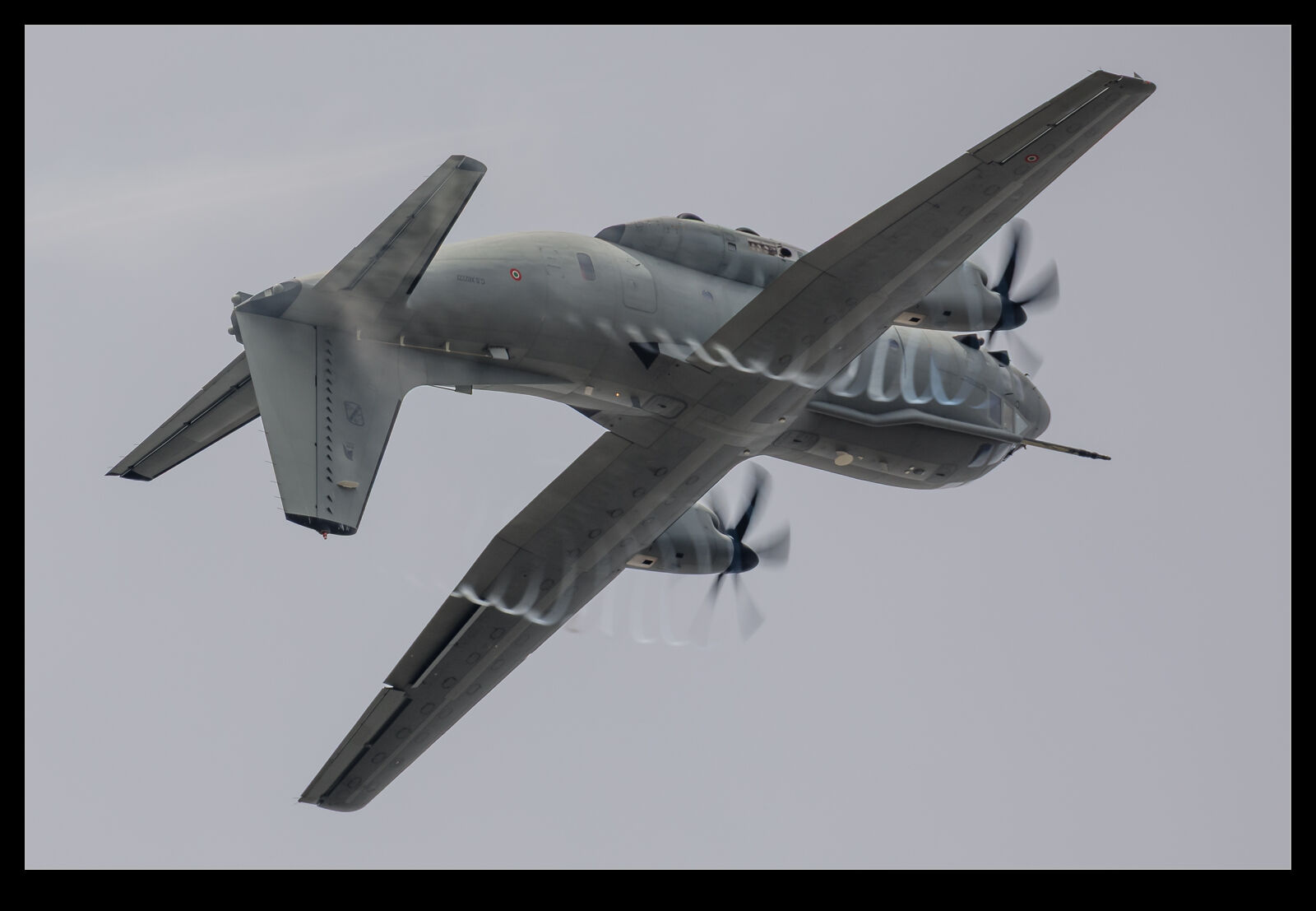 I have seen plenty of footage of C-27J displays where the crews make use of the plentiful power of the type to undertake aerobatics. However, I had never seen it in person. The only C-27Js I had seen display were from the US Coast Guard and they were much more benign in their performance. RIAT brought an example from the Italian Air Force’s test centre and the crew that displayed it knew exactly how much performance they could wring from it.
I have seen plenty of footage of C-27J displays where the crews make use of the plentiful power of the type to undertake aerobatics. However, I had never seen it in person. The only C-27Js I had seen display were from the US Coast Guard and they were much more benign in their performance. RIAT brought an example from the Italian Air Force’s test centre and the crew that displayed it knew exactly how much performance they could wring from it.
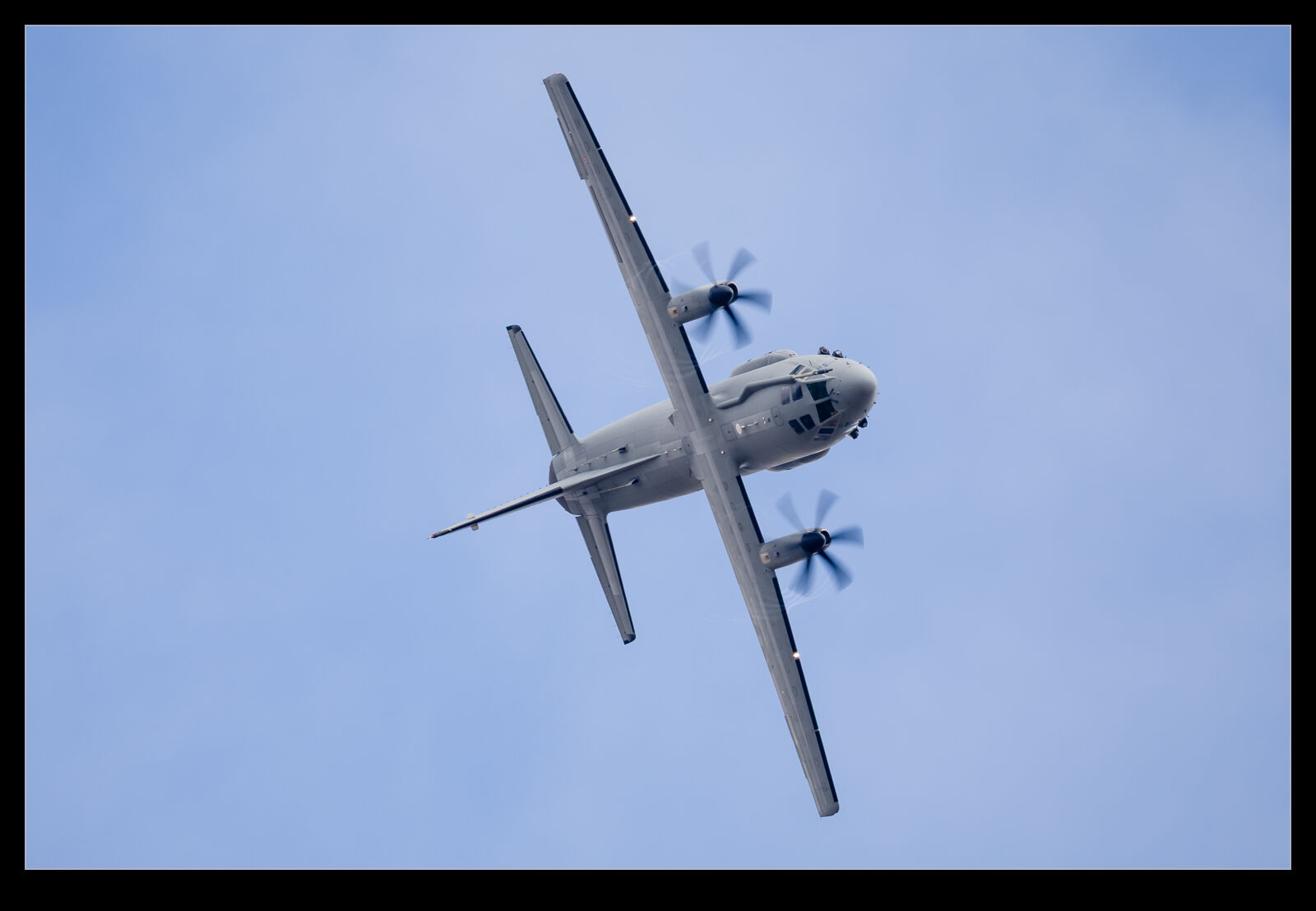 They displayed a few times during the show, and each performance was worth stopping to watch. The ability to loop and roll a decent sized transport was impressive. The conditions during some of the displays were not ideal from a lighting point of view but the humidity in the air did make for some great prop vortices. An inverted plane streaming vapour from the props makes for an interesting image. If you haven’t had the chance to see the display and an opportunity presents itself, do be there.
They displayed a few times during the show, and each performance was worth stopping to watch. The ability to loop and roll a decent sized transport was impressive. The conditions during some of the displays were not ideal from a lighting point of view but the humidity in the air did make for some great prop vortices. An inverted plane streaming vapour from the props makes for an interesting image. If you haven’t had the chance to see the display and an opportunity presents itself, do be there.
Before the Atlantique, There Was the Atlantic!
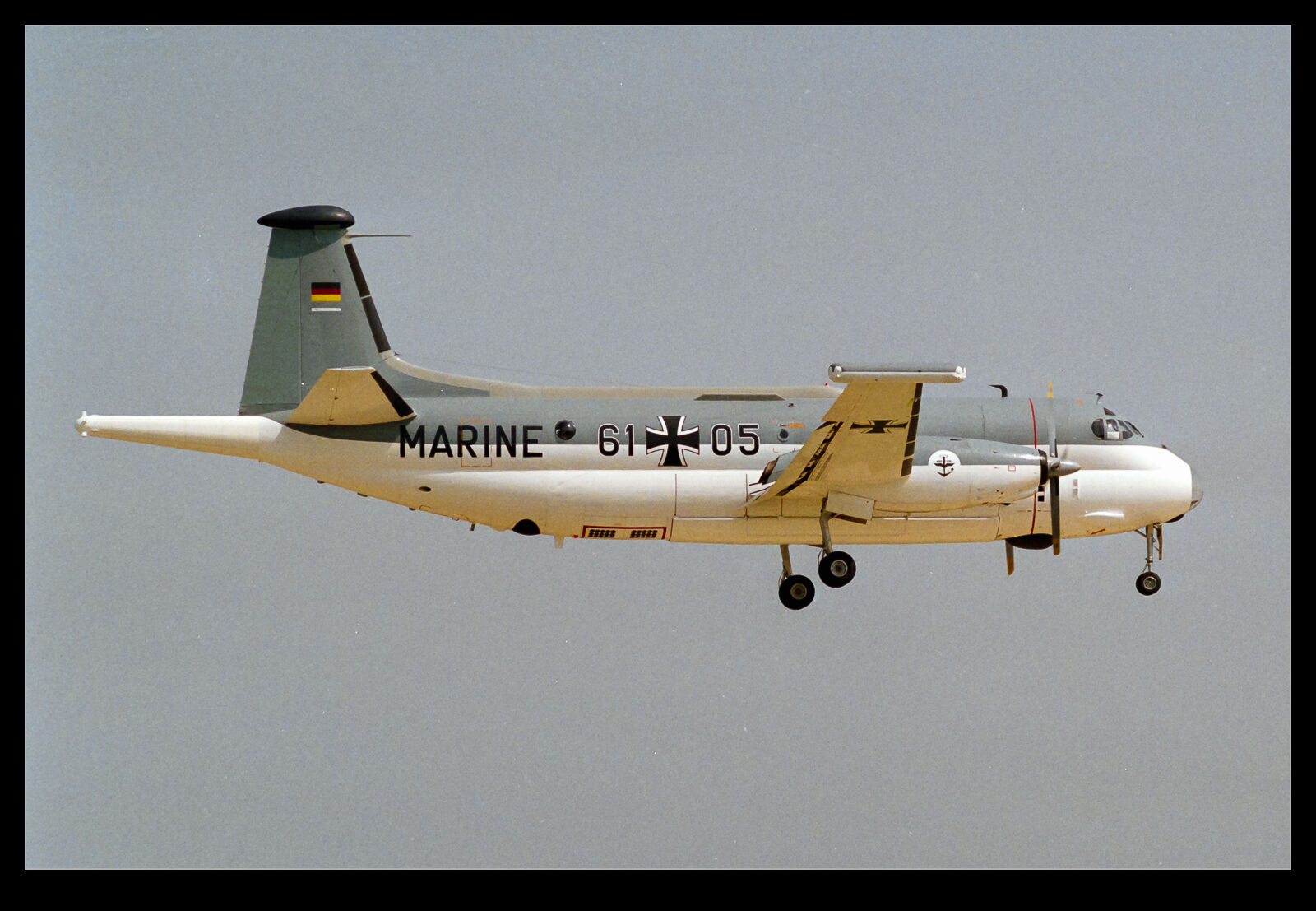 I posted recently with some shots of the Dassault Atlantique that was at RIAT. However, that got me thinking of the history of the Atlantique. It was actually an update to a previous generation plane. This was the Atlantic. Operated by France, Germany, Italy, the Netherlands and Pakistan, the Atlantic design was updated to create the Atlantique and the Atlantics were retired. I knew I had seen some of them for real and that was likely to be at Mildenhall when the Air Fete was able to attract a wide variety of operators and types. Turns out it was the French and German versions I got to see. Here are some shots of them.
I posted recently with some shots of the Dassault Atlantique that was at RIAT. However, that got me thinking of the history of the Atlantique. It was actually an update to a previous generation plane. This was the Atlantic. Operated by France, Germany, Italy, the Netherlands and Pakistan, the Atlantic design was updated to create the Atlantique and the Atlantics were retired. I knew I had seen some of them for real and that was likely to be at Mildenhall when the Air Fete was able to attract a wide variety of operators and types. Turns out it was the French and German versions I got to see. Here are some shots of them.
Rows of A400Ms
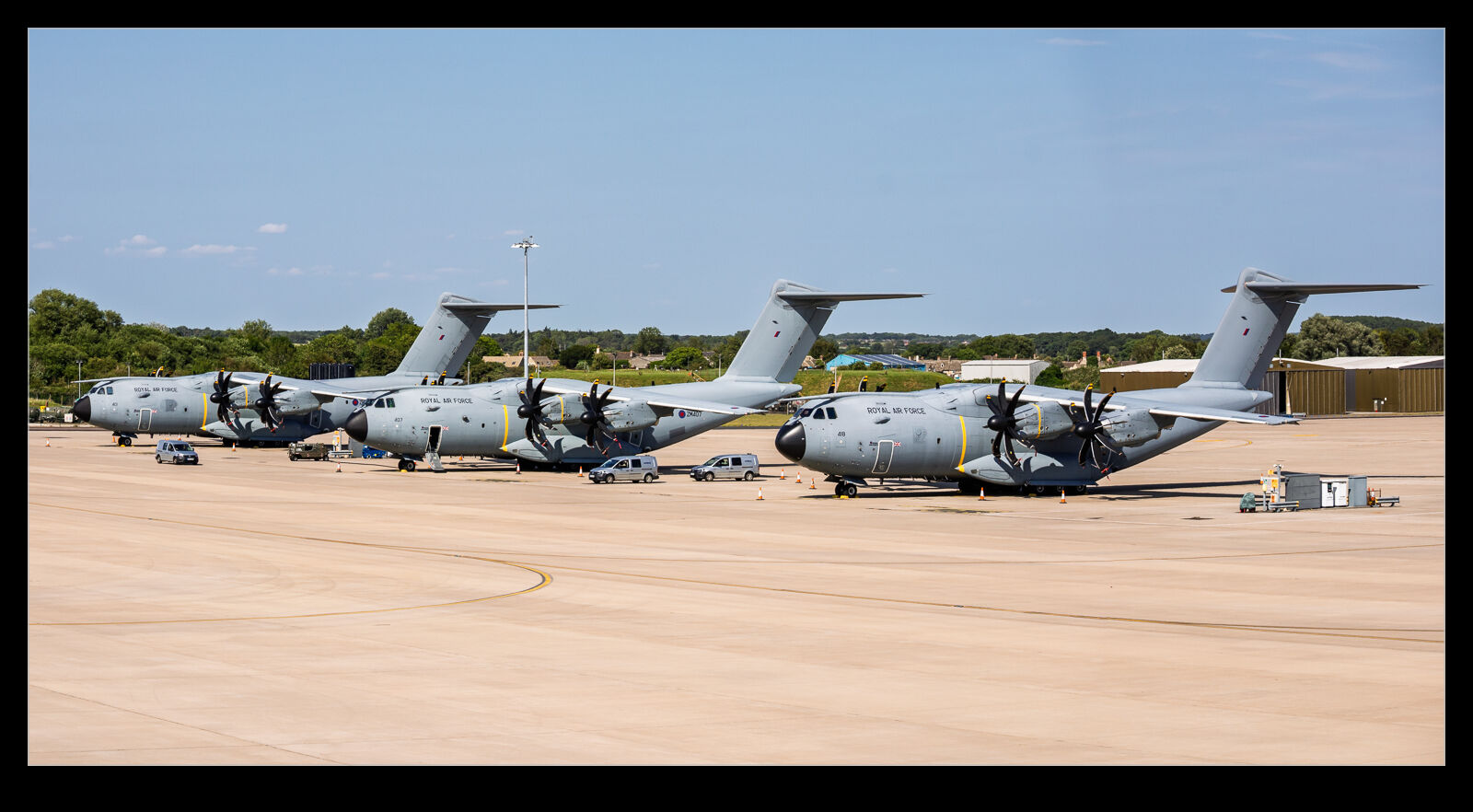 My visit to Brize Norton to have a trip with 101 Sqn wrapped up when we landed back at Brize. As we exited the aircraft and waited on the ramp to get some group photos, we were surrounded by other aircraft. More Voyagers were lined up but there were plenty of A400M Atlas transports ready for their next mission. It was a pleasant afternoon with nice light on the planes so I grabbed a few shots of the planes before we gathered for our group photo.
My visit to Brize Norton to have a trip with 101 Sqn wrapped up when we landed back at Brize. As we exited the aircraft and waited on the ramp to get some group photos, we were surrounded by other aircraft. More Voyagers were lined up but there were plenty of A400M Atlas transports ready for their next mission. It was a pleasant afternoon with nice light on the planes so I grabbed a few shots of the planes before we gathered for our group photo.
Reinforcement Around a Cargo Door
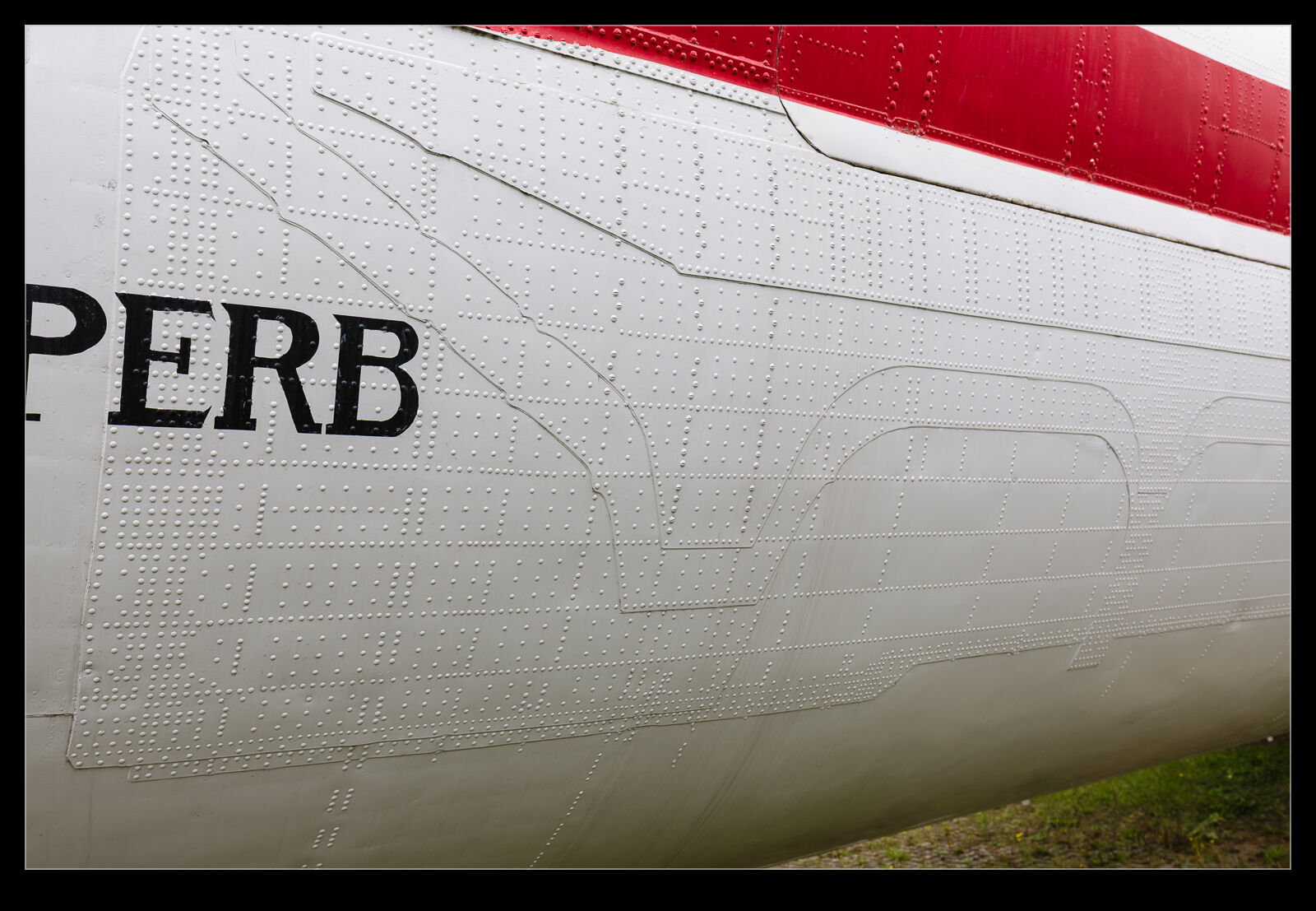 The Vickers Vanguard might not have had the sales success of its predecessor, the Viscount, but a number of the passenger planes had a long career as a result of conversion to the Merchantman freighter configuration. One of these is on display at the Brooklands Museum. Since the cargo door was not an original design feature, the fuselage needed to be reinforced to accommodate the stress redistribution around the door aperture.
The Vickers Vanguard might not have had the sales success of its predecessor, the Viscount, but a number of the passenger planes had a long career as a result of conversion to the Merchantman freighter configuration. One of these is on display at the Brooklands Museum. Since the cargo door was not an original design feature, the fuselage needed to be reinforced to accommodate the stress redistribution around the door aperture.
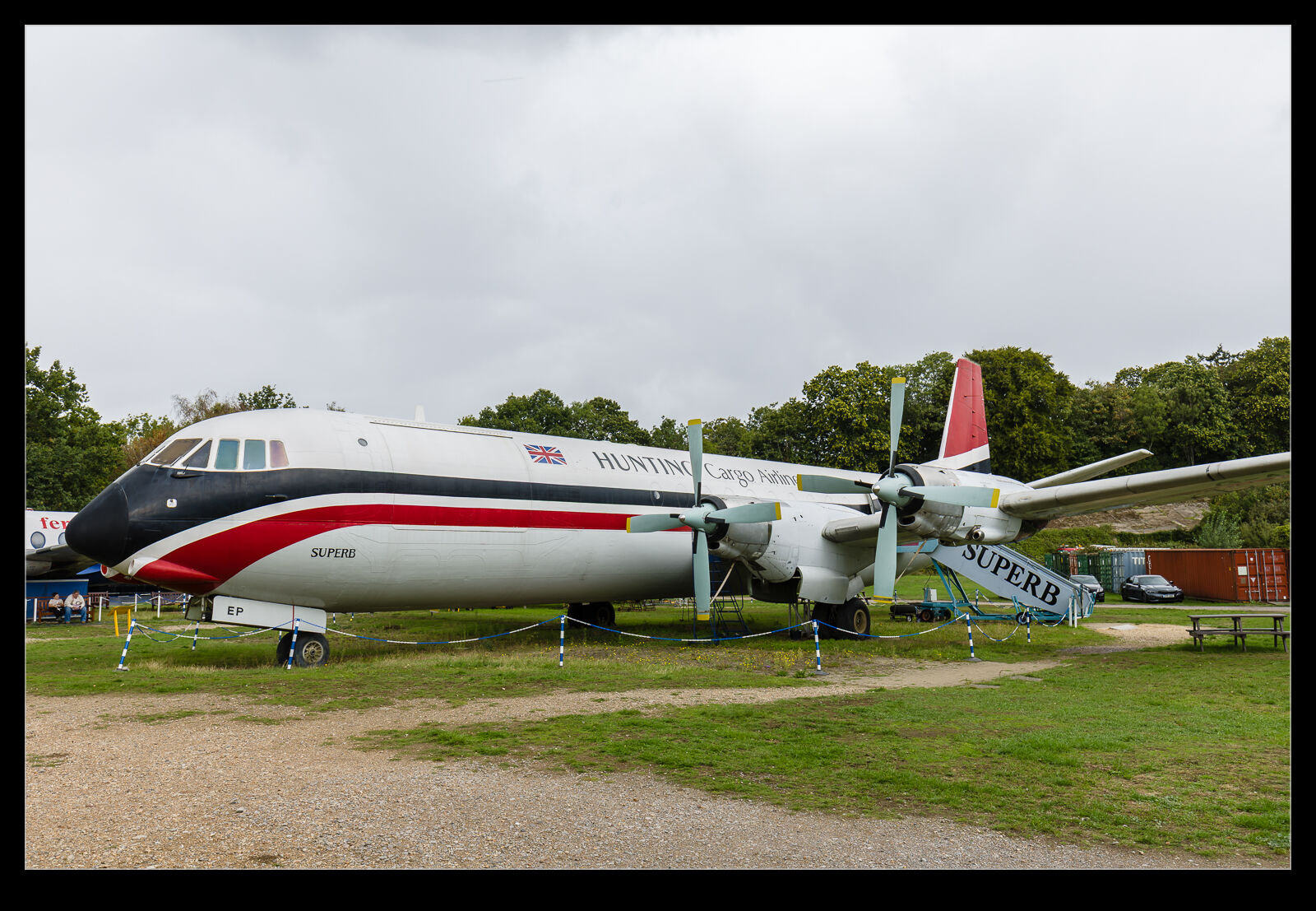 Since this was a retrofit, it was far simpler to have the reinforcement on the outside of the fuselage. Looking closely at the example at the museum, you can see the multiple layers of reinforcement to build up the thickness in the areas with the greatest stress increase. There were about ten layers in total with them tapering out as you got further from the opening. This was all prior to the days of finite element analysis so would have involved a lot of hand calculations!
Since this was a retrofit, it was far simpler to have the reinforcement on the outside of the fuselage. Looking closely at the example at the museum, you can see the multiple layers of reinforcement to build up the thickness in the areas with the greatest stress increase. There were about ten layers in total with them tapering out as you got further from the opening. This was all prior to the days of finite element analysis so would have involved a lot of hand calculations!
The Atlantique is a Great Throwback
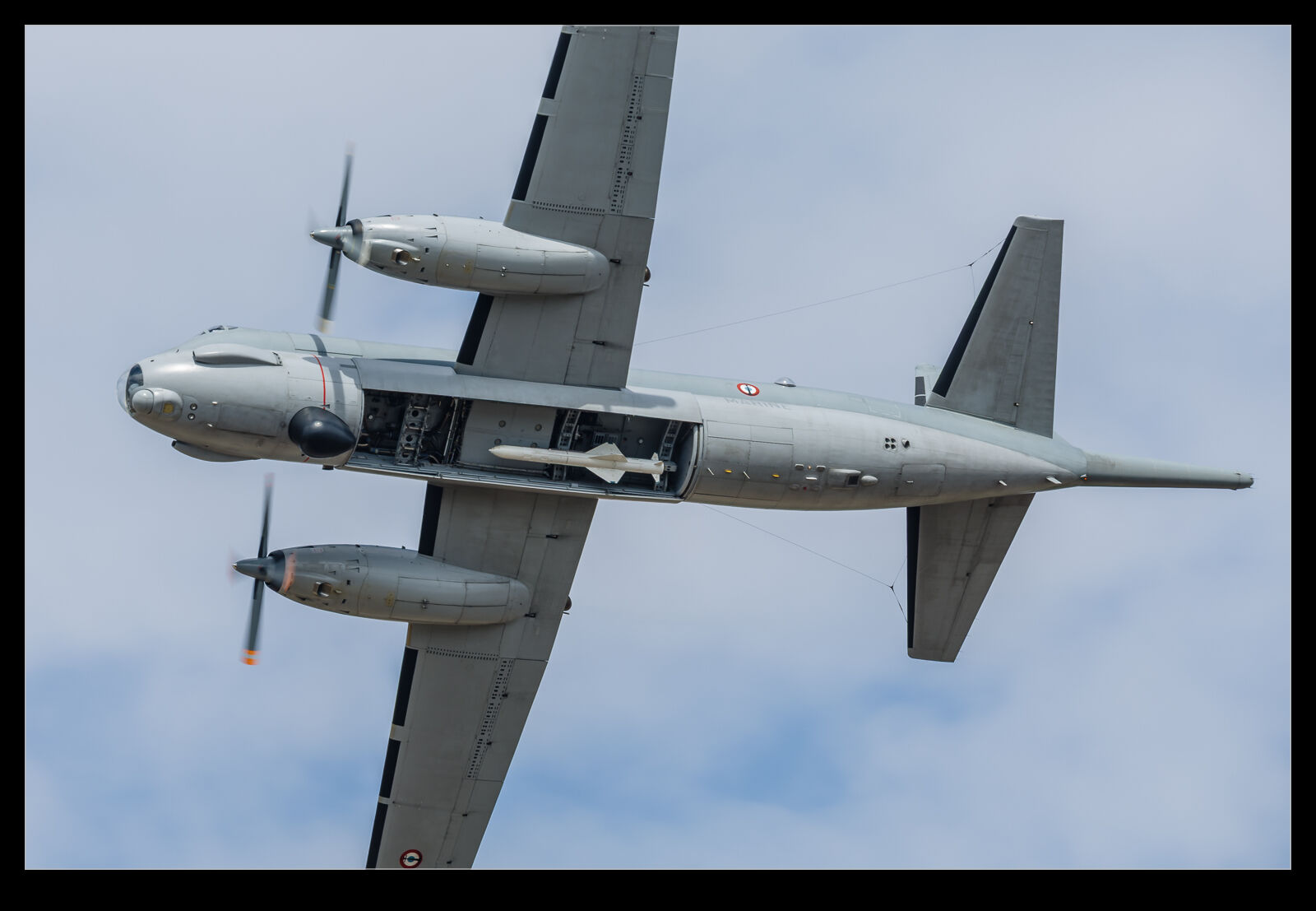 RIAT provided many high points for me this year. One of the types I haven’t seen for a long time was the Atlantique operated by the French Navy. I think I last saw one at Mildenhall at an Air Fete at the beginning of the 90s. Not only was the plane on the ground but it was also taking part in the flying display. Powered by a pair of Tyne turboprops, the engine whine on the ground is quite painful. You do need to give your ears some protection to avoid it getting too much. Once those engines are ramped up to take off power, the humid conditions meant some nice prop vortices showed up.
RIAT provided many high points for me this year. One of the types I haven’t seen for a long time was the Atlantique operated by the French Navy. I think I last saw one at Mildenhall at an Air Fete at the beginning of the 90s. Not only was the plane on the ground but it was also taking part in the flying display. Powered by a pair of Tyne turboprops, the engine whine on the ground is quite painful. You do need to give your ears some protection to avoid it getting too much. Once those engines are ramped up to take off power, the humid conditions meant some nice prop vortices showed up.
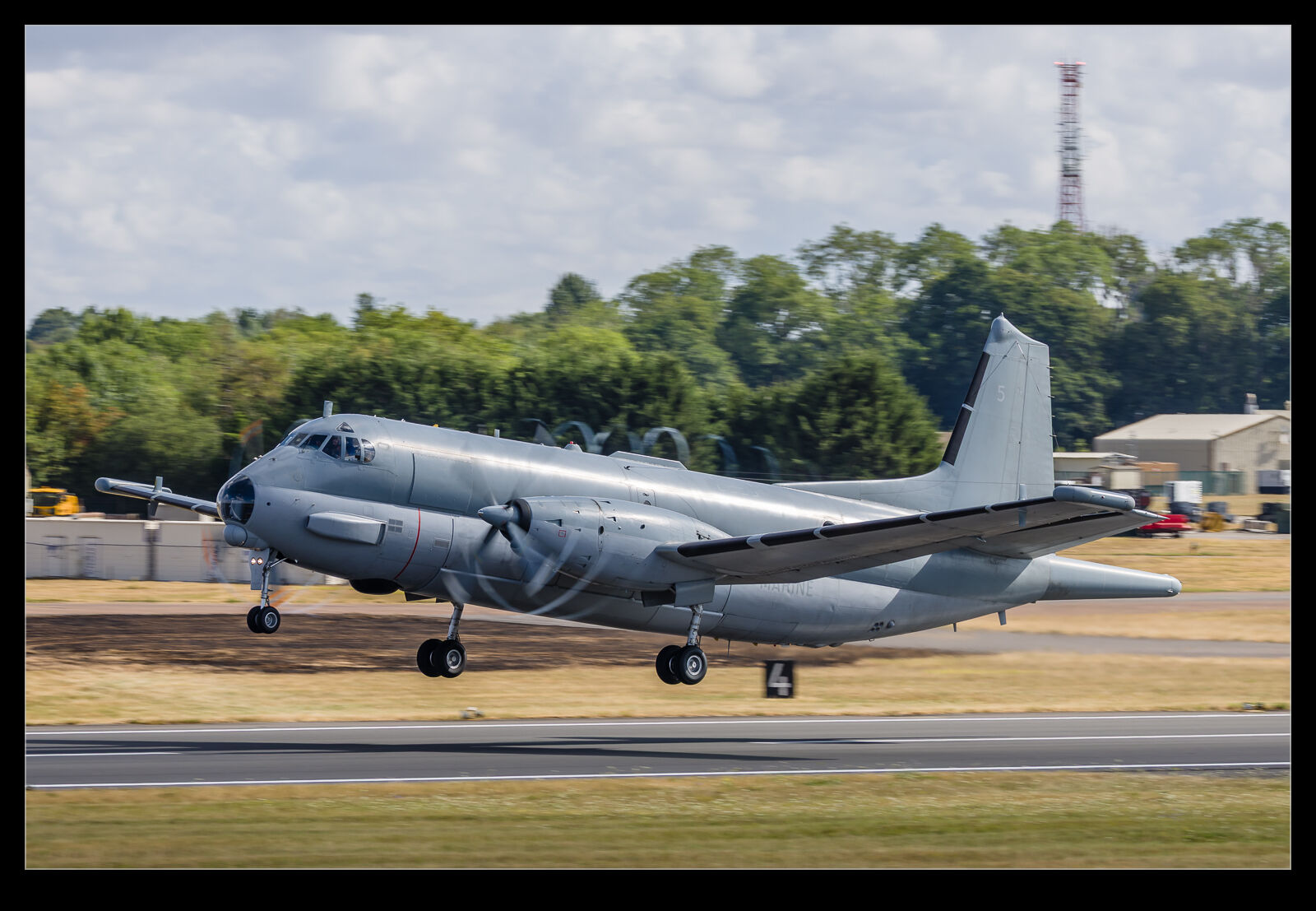 The display consisted of a number of passes. There is a radar installation that retracts into the fuselage for take off and landing as well as when it isn’t needed and drag reduction is more valuable. For some of the passes this radar was extended. Also, there is a large underfuselage weapons bay and the doors to this were opened to reveal a captive Exocet missile. The Exocet is a large weapon, and you really appreciate that when it is shown against a plane as large as the Atlantique. The French Navy is planning on introducing a new type based on a Falcon business jet so the chances to see an Atlantique will be diminishing soon.
The display consisted of a number of passes. There is a radar installation that retracts into the fuselage for take off and landing as well as when it isn’t needed and drag reduction is more valuable. For some of the passes this radar was extended. Also, there is a large underfuselage weapons bay and the doors to this were opened to reveal a captive Exocet missile. The Exocet is a large weapon, and you really appreciate that when it is shown against a plane as large as the Atlantique. The French Navy is planning on introducing a new type based on a Falcon business jet so the chances to see an Atlantique will be diminishing soon.
Catching an Evolution in the Gloom
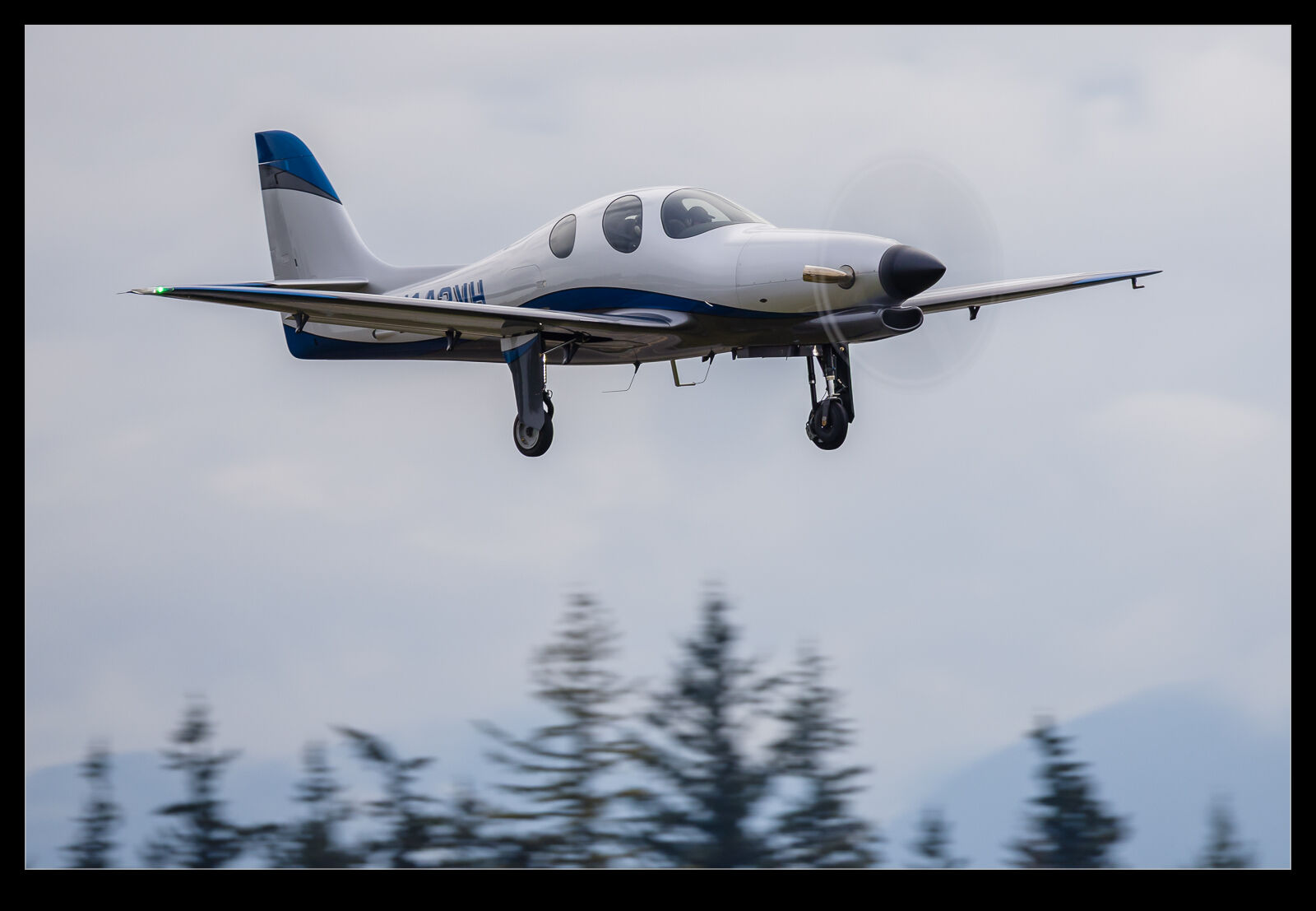 The Lancair Evolution is not a particularly common aircraft although I have come across examples over the years. However, one slightly gloomy Sunday afternoon, I saw that one was heading to Paine Field. I understand that it might be locally based but I hadn’t seen it before and, with not a lot else going on, made the short trip up to Everett. On jaunts like this, you start persuading yourself that the clouds are going to part at just the right moment and then the sun will illuminate your subject against a dark and foreboding sky.
The Lancair Evolution is not a particularly common aircraft although I have come across examples over the years. However, one slightly gloomy Sunday afternoon, I saw that one was heading to Paine Field. I understand that it might be locally based but I hadn’t seen it before and, with not a lot else going on, made the short trip up to Everett. On jaunts like this, you start persuading yourself that the clouds are going to part at just the right moment and then the sun will illuminate your subject against a dark and foreboding sky.
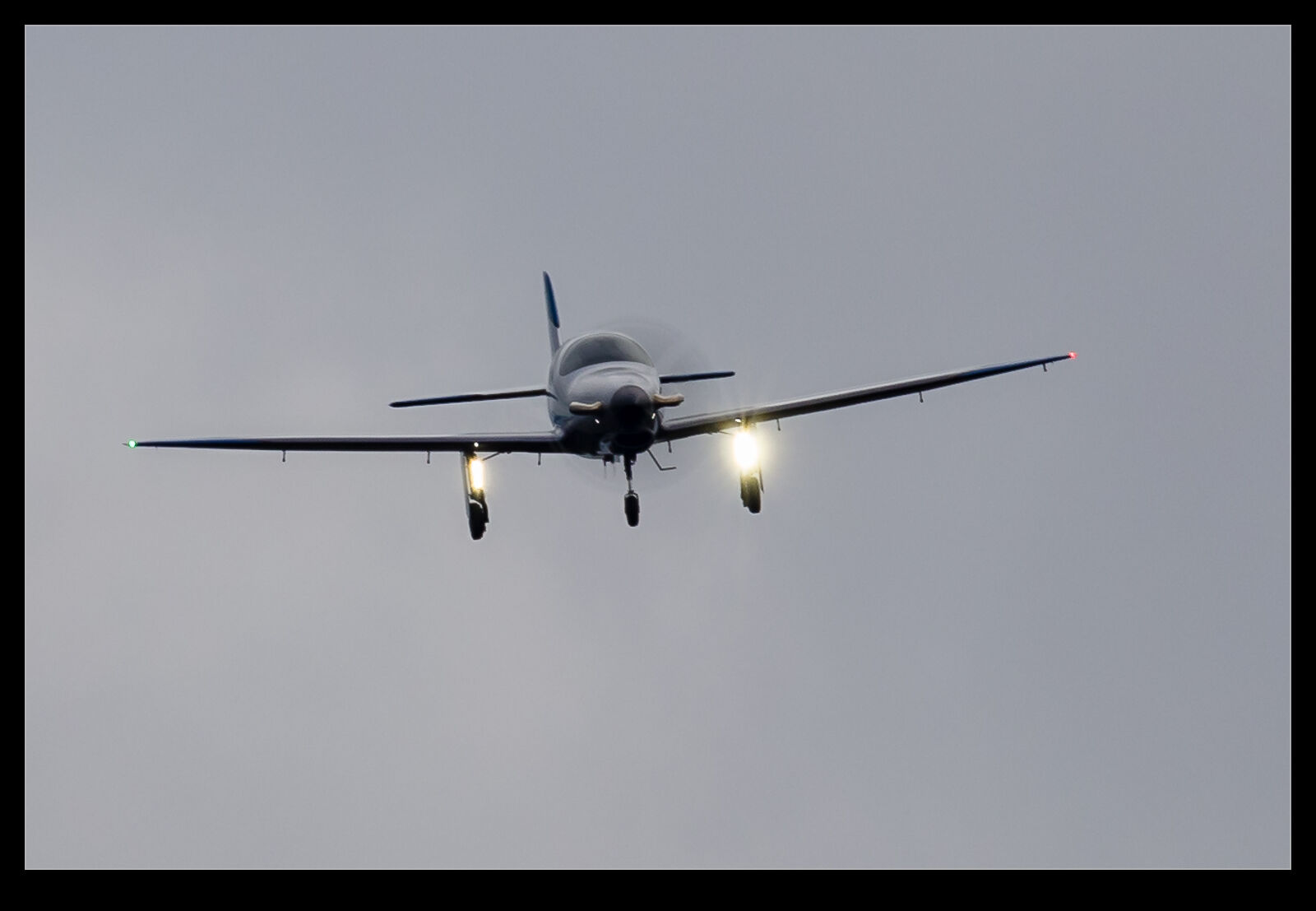 That has worked for me on occasion but this was not such an occasion. The conditions were still pretty dull when they showed up on approach. As is often my technique in these conditions, I shot quite heavily over-exposed. This allows for lots of detail in the aircraft to be captured and then for some masking of the background to bring it back down to something resembling what it actually was on the day. The eye does such a good job of dealing with dynamic range that it is amazing to see just how badly the exposures can vary in conditions like this. Getting the most of the data from the initial image and then letting the post processing techniques bring it back to what you actually saw is the way I like to go. This plane flew quite a bit after this day but never when I had a chance to catch it again so no sunny shots of it I’m afraid.
That has worked for me on occasion but this was not such an occasion. The conditions were still pretty dull when they showed up on approach. As is often my technique in these conditions, I shot quite heavily over-exposed. This allows for lots of detail in the aircraft to be captured and then for some masking of the background to bring it back down to something resembling what it actually was on the day. The eye does such a good job of dealing with dynamic range that it is amazing to see just how badly the exposures can vary in conditions like this. Getting the most of the data from the initial image and then letting the post processing techniques bring it back to what you actually saw is the way I like to go. This plane flew quite a bit after this day but never when I had a chance to catch it again so no sunny shots of it I’m afraid.
Testing the Nosewheel on the A400M
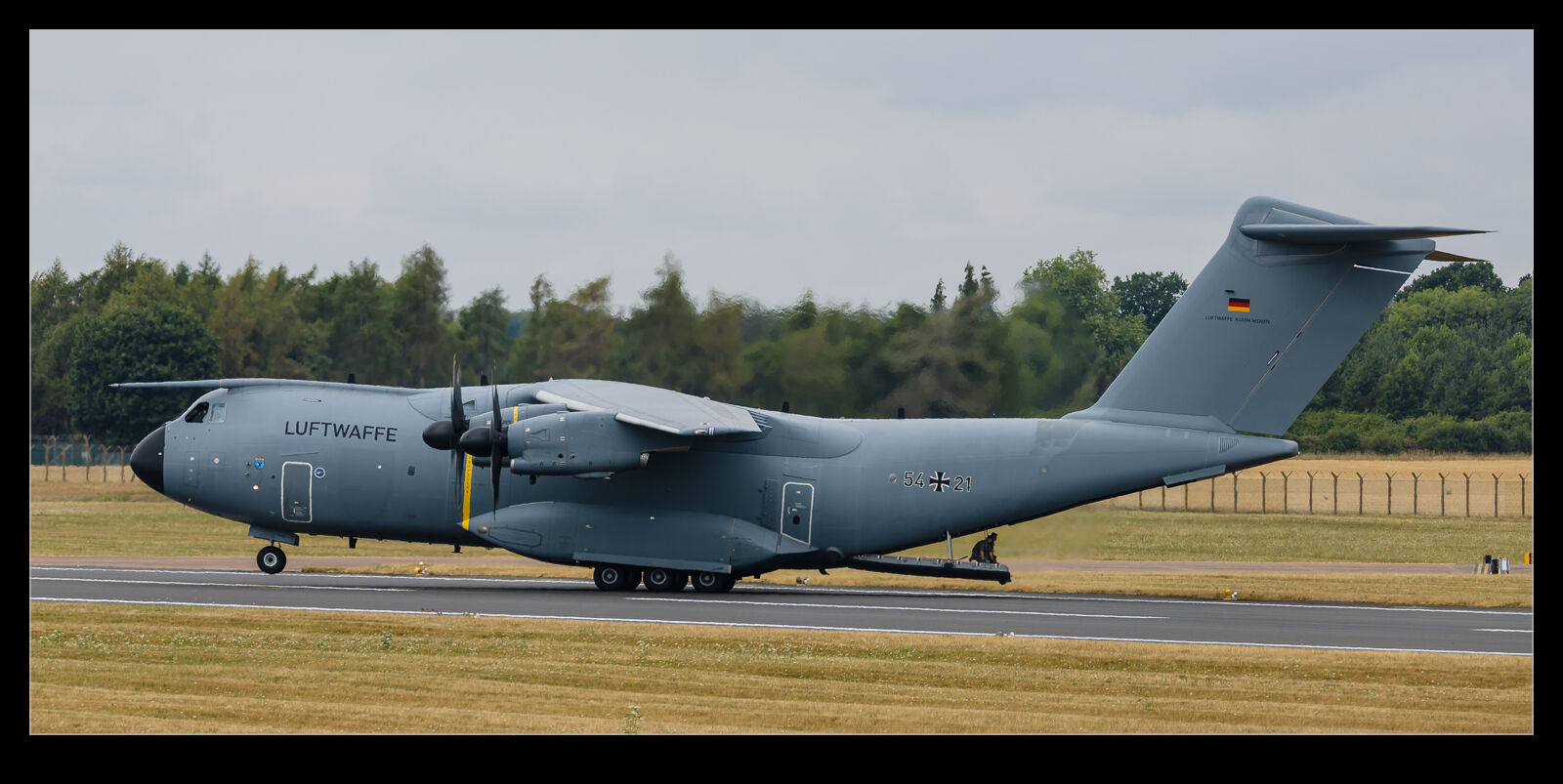 If you have heard much from the flying displays at the Royal International Air Tattoo this year, you may well have heard about the Luftwaffe A400M doing a wheelie. I will cover that too but the whole approach to land was one that tested the nosewheel of the aircraft quite a bit. They made a tactical approach to land and aimed for a touchdown point closer to show centre so near the crowd and one that would be a good demonstration of how quickly the plane can stop once on the ground.
If you have heard much from the flying displays at the Royal International Air Tattoo this year, you may well have heard about the Luftwaffe A400M doing a wheelie. I will cover that too but the whole approach to land was one that tested the nosewheel of the aircraft quite a bit. They made a tactical approach to land and aimed for a touchdown point closer to show centre so near the crowd and one that would be a good demonstration of how quickly the plane can stop once on the ground.
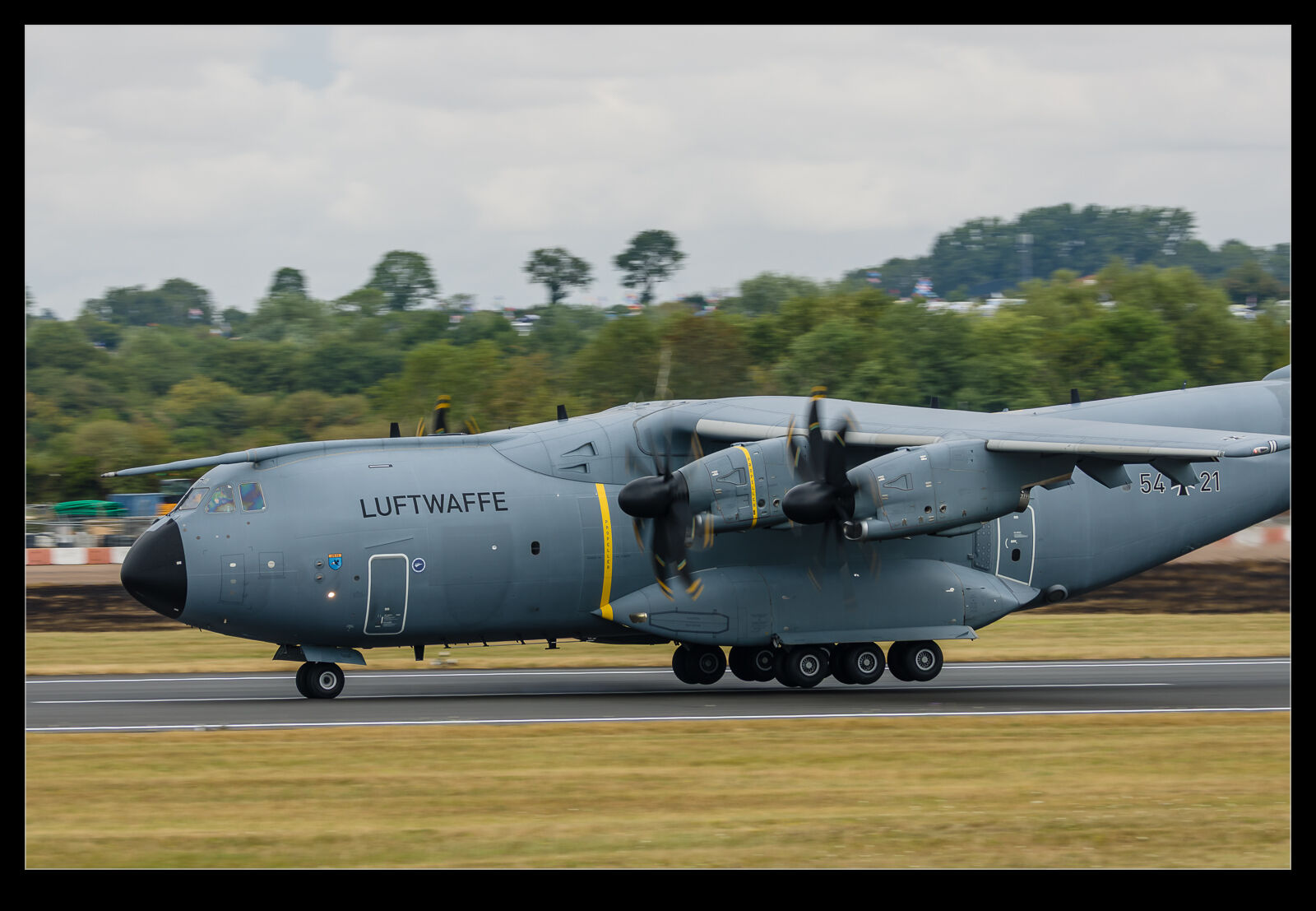 The approach was nose low and, while they did aim to flare the aircraft before touchdown, the nosewheel was the first to make contact with the mains following a short while afterwards. Since this plane is designed to operate from austere strips, the gear is pretty tough, and I doubt a touchdown on a smooth runway is going to cause it undue stress. They then stamped on the brakes and reversed the prop pitch to bring the plane to a rapid stop.
The approach was nose low and, while they did aim to flare the aircraft before touchdown, the nosewheel was the first to make contact with the mains following a short while afterwards. Since this plane is designed to operate from austere strips, the gear is pretty tough, and I doubt a touchdown on a smooth runway is going to cause it undue stress. They then stamped on the brakes and reversed the prop pitch to bring the plane to a rapid stop.
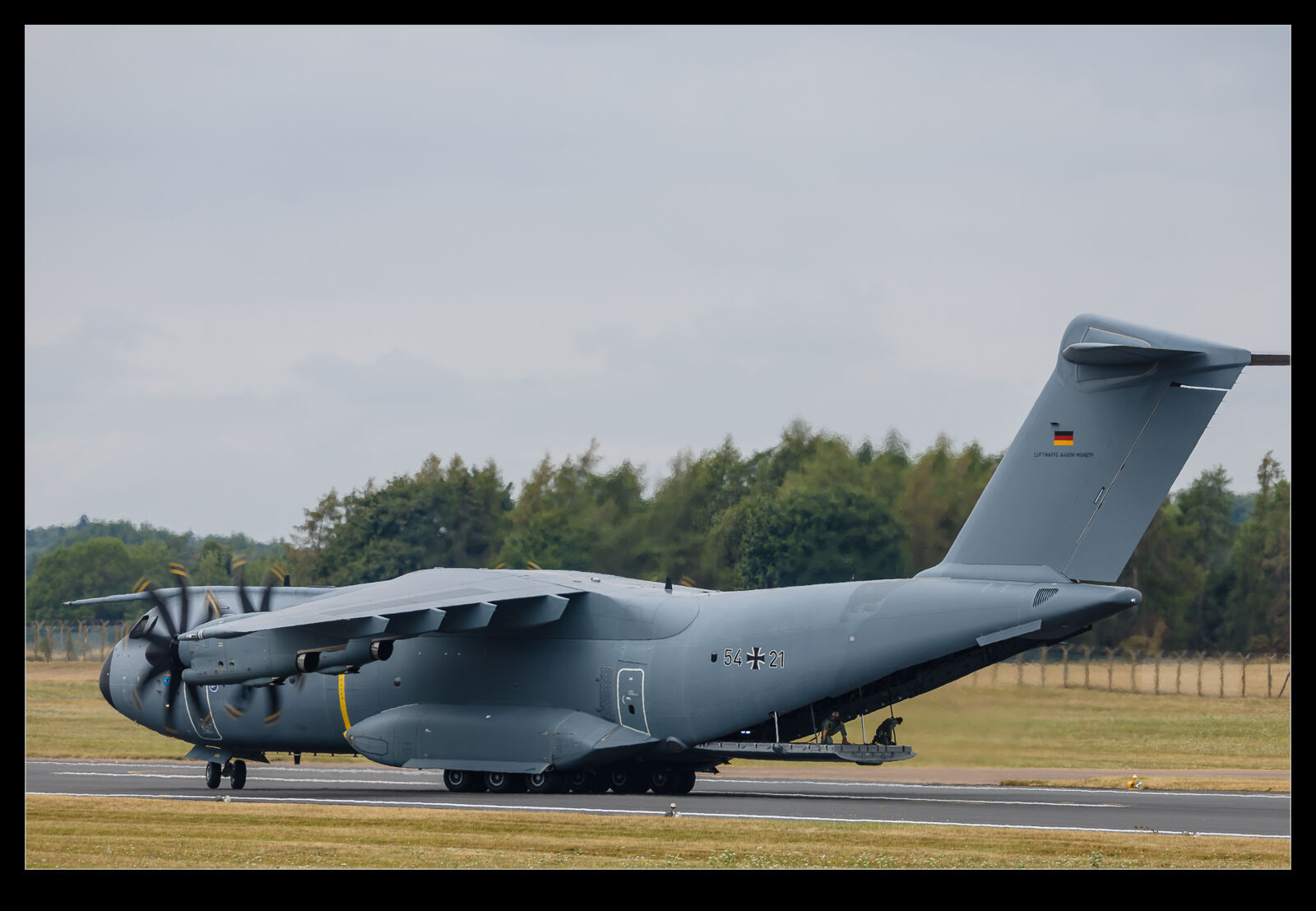 The next part of the manoeuvre was a bit problematic. Keeping the prop in reverse, they started to back up the runway. A crew member was on the ramp as it opened to guide them. They put in a ton of nosewheel steering to swing the plane around, but I don’t think there was much weight on the front of the plane, and the tyres were skidding across the surface, and the turn was not as dramatic as intended.
The next part of the manoeuvre was a bit problematic. Keeping the prop in reverse, they started to back up the runway. A crew member was on the ramp as it opened to guide them. They put in a ton of nosewheel steering to swing the plane around, but I don’t think there was much weight on the front of the plane, and the tyres were skidding across the surface, and the turn was not as dramatic as intended.
Then came the fun bit. As they backed towards the edge of the runway, instead of applying some power to the props to stop them, they applied wheel brakes. With the plane going backwards and the braking action under the centre of the airframe, the plane pitched up and the nosewheel came off the ground. It didn’t go too high, and the ramp never hit the ground, but it certainly got everyone’s attention in the crowd! I wonder how the debrief went after the display.
Kemble’s Other Residents
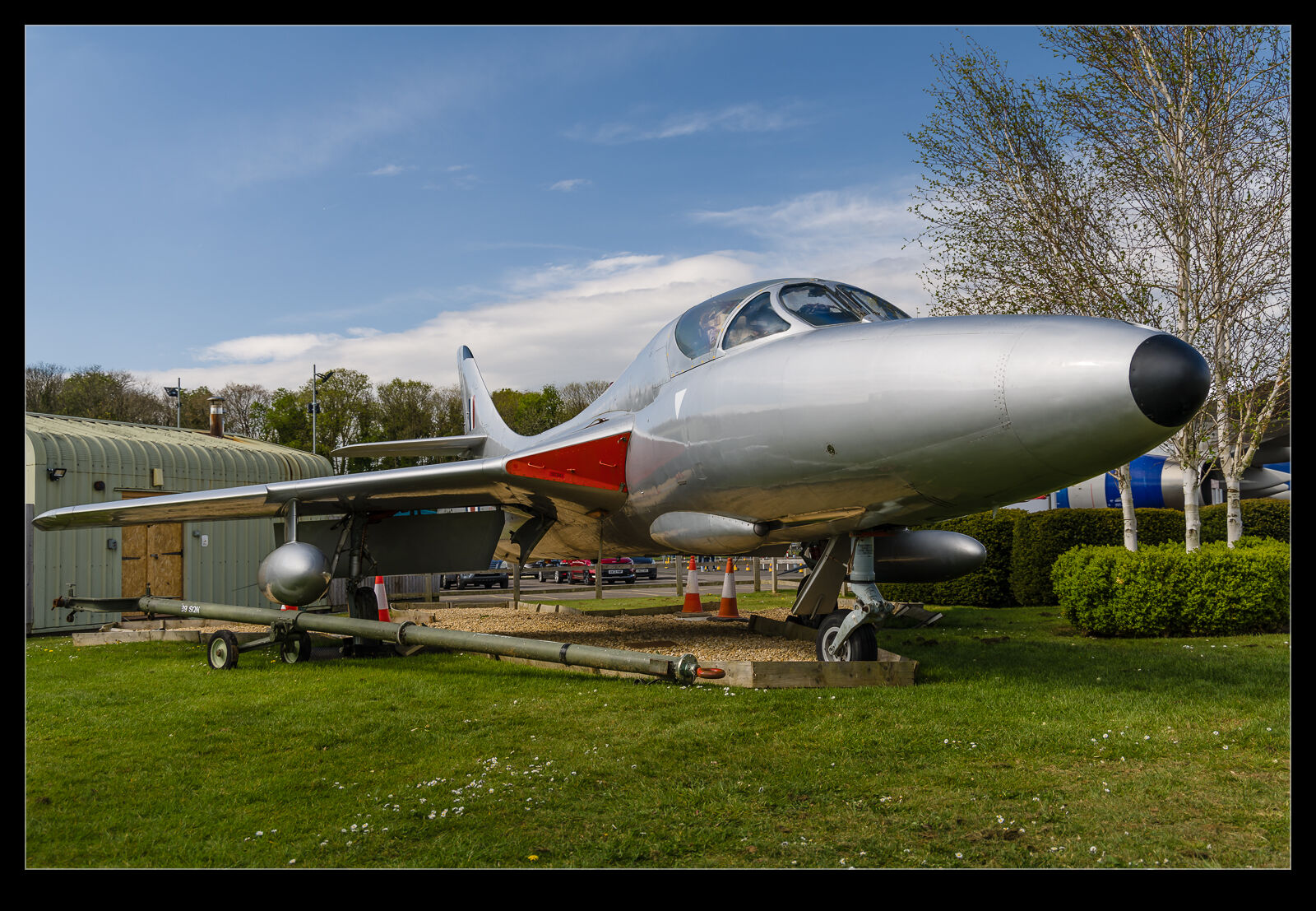 My visit to the TBAG event at Kemble was quite a while ago now. However, still more to share from that day out. The airfield is home to the Buccaneers and the Phantoms that I have posted about but there are some other aircraft that are parked there. This includes one of the Ex-British Airways 747-400s that were painted in retro liveries. There is a Gnat painted in Red Arrows colours, and a Canberra PR9 in a silver scheme. Both look good.
My visit to the TBAG event at Kemble was quite a while ago now. However, still more to share from that day out. The airfield is home to the Buccaneers and the Phantoms that I have posted about but there are some other aircraft that are parked there. This includes one of the Ex-British Airways 747-400s that were painted in retro liveries. There is a Gnat painted in Red Arrows colours, and a Canberra PR9 in a silver scheme. Both look good.
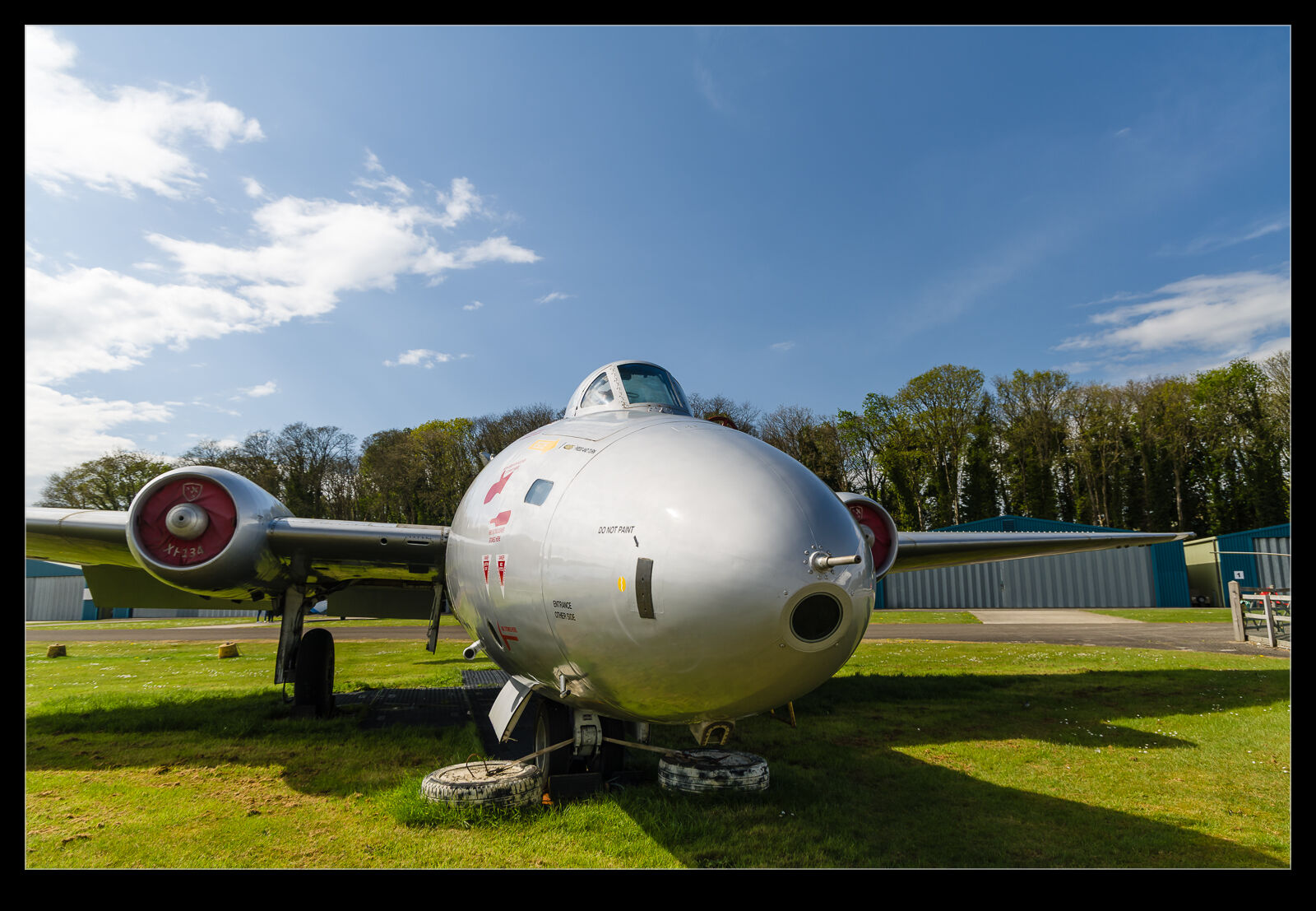 A Hunter is also in a silver scheme which is a nice addition and there is a Bristol Britannia that I have posted about previously. These are all by or close to the café so any visitors to the airfield will have a few cool planes to check out during their visit.
A Hunter is also in a silver scheme which is a nice addition and there is a Bristol Britannia that I have posted about previously. These are all by or close to the café so any visitors to the airfield will have a few cool planes to check out during their visit.
An Epic Skirting the Sun
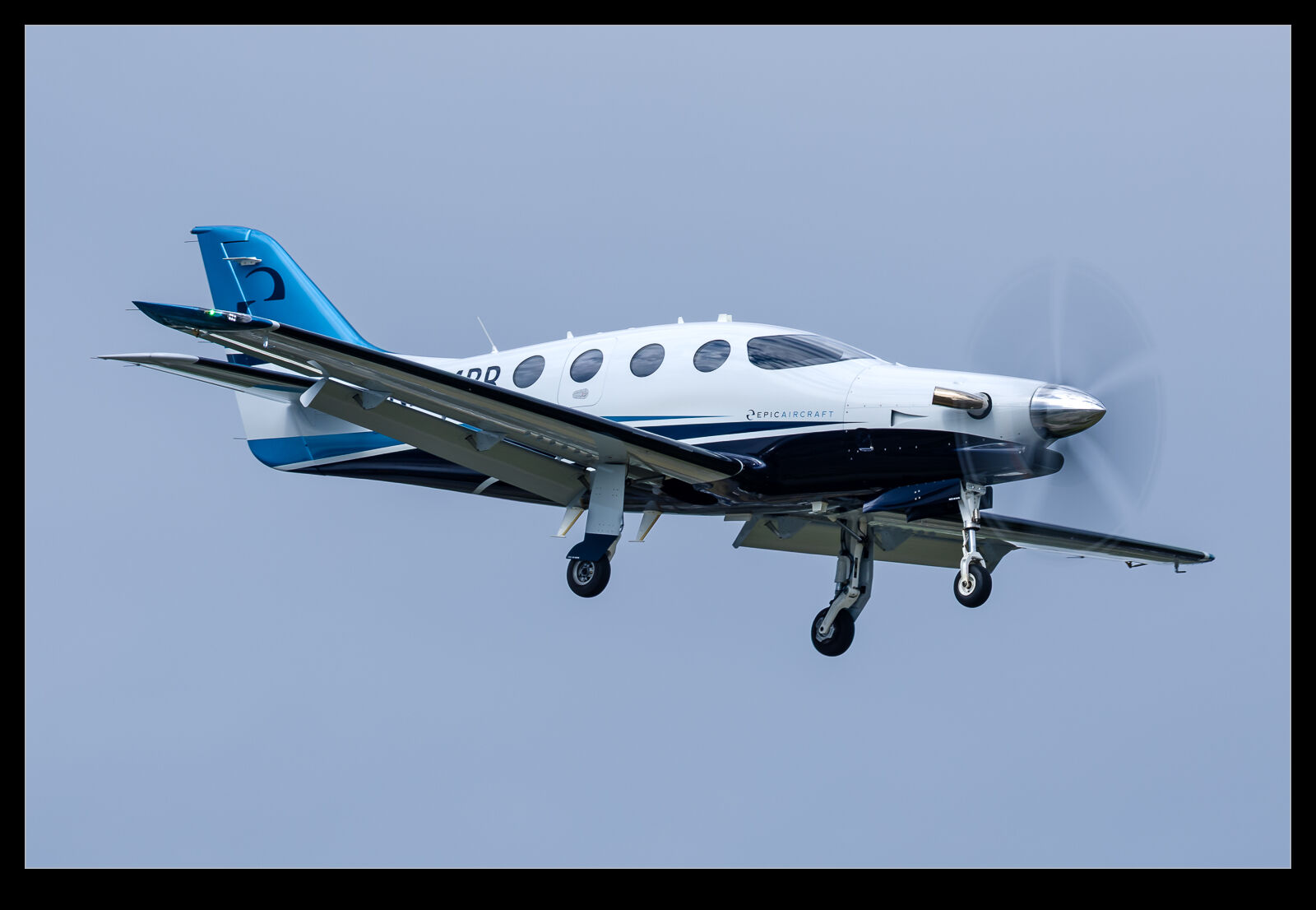 Epic E1000s have shown up on the blog before and in less than ideal conditions. Sometimes you just have to work with what is available. It doesn’t stop me trying, of course, and when another one was due in to Boeing Field and the conditions looked promising, I headed out. When I was in place and they were getting closer, the sun was playing games with me. I would have some nice light for a while and then the clouds would drift back in again. They wouldn’t stay long and then sun would be back but the question was, what would it be like at the critical moment. At Boeing Field, I have often had good light further up the approach (and too far away), cloud over the ideal location and then sun again as they get to very short final but again too far for a decent shot. Would this be one of those days?
Epic E1000s have shown up on the blog before and in less than ideal conditions. Sometimes you just have to work with what is available. It doesn’t stop me trying, of course, and when another one was due in to Boeing Field and the conditions looked promising, I headed out. When I was in place and they were getting closer, the sun was playing games with me. I would have some nice light for a while and then the clouds would drift back in again. They wouldn’t stay long and then sun would be back but the question was, what would it be like at the critical moment. At Boeing Field, I have often had good light further up the approach (and too far away), cloud over the ideal location and then sun again as they get to very short final but again too far for a decent shot. Would this be one of those days?
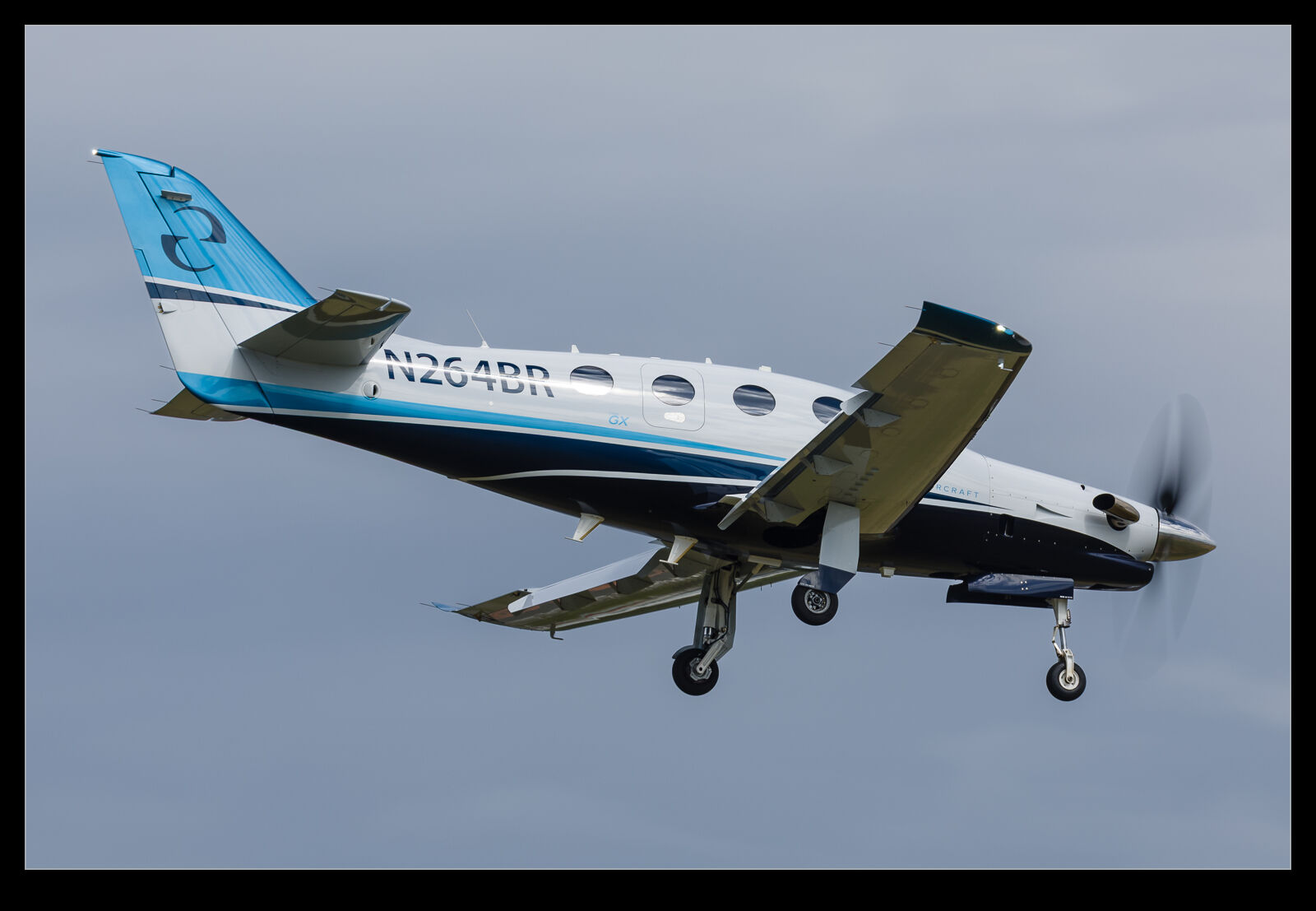 No! On this occasion, the conditions played ball and, as the E1000 came zipping down the approach, the sun was out in all the right places. I grabbed some shots and the blues in the paint really did seem to pop. I was quite satisfied. I did get one more Epic encounter at BFI before we moved away which was from the other end providing a different type of shot in good light but, after that, while there were lots of movements to BFI before we left, I didn’t have the chance to see them.
No! On this occasion, the conditions played ball and, as the E1000 came zipping down the approach, the sun was out in all the right places. I grabbed some shots and the blues in the paint really did seem to pop. I was quite satisfied. I did get one more Epic encounter at BFI before we moved away which was from the other end providing a different type of shot in good light but, after that, while there were lots of movements to BFI before we left, I didn’t have the chance to see them.
